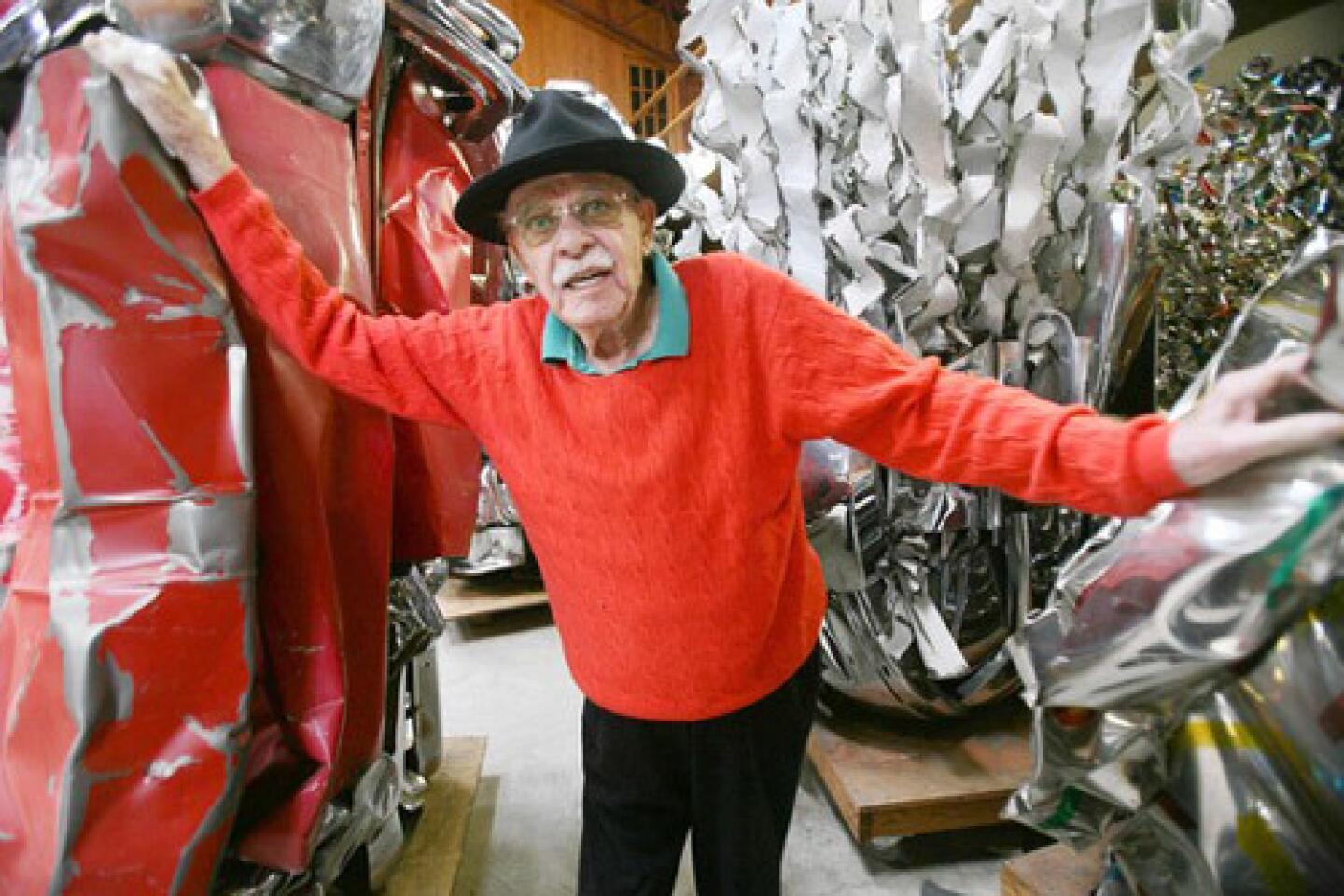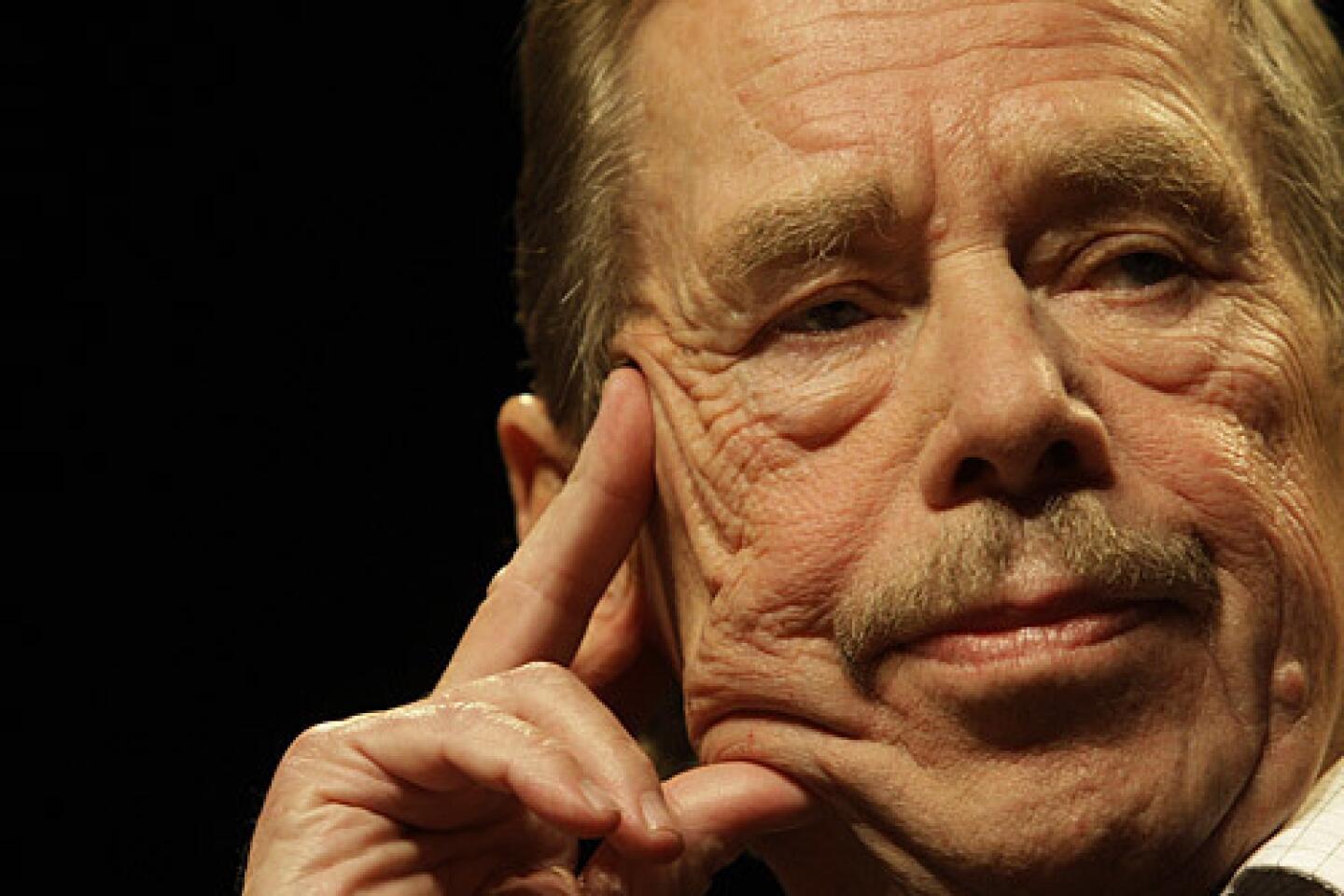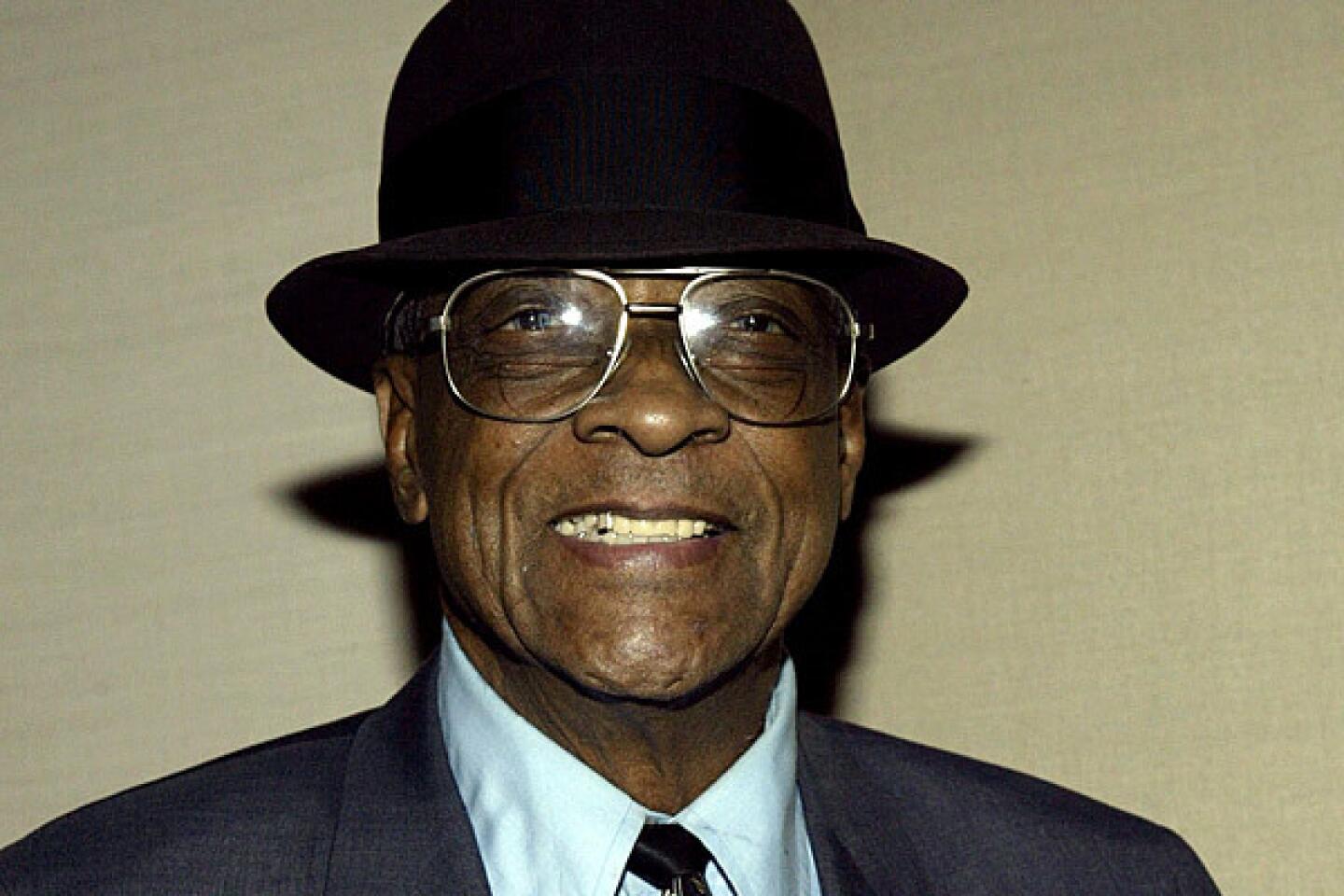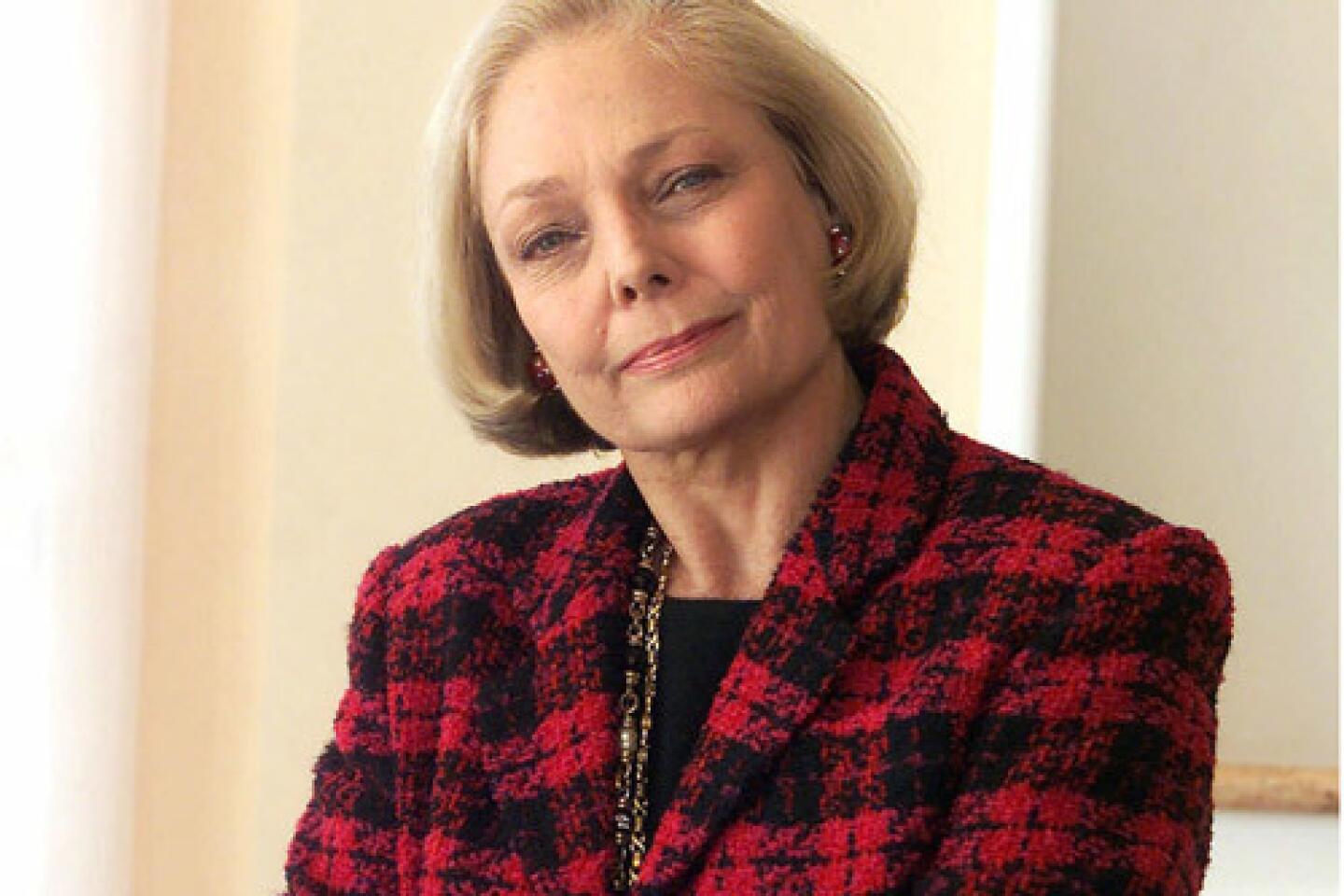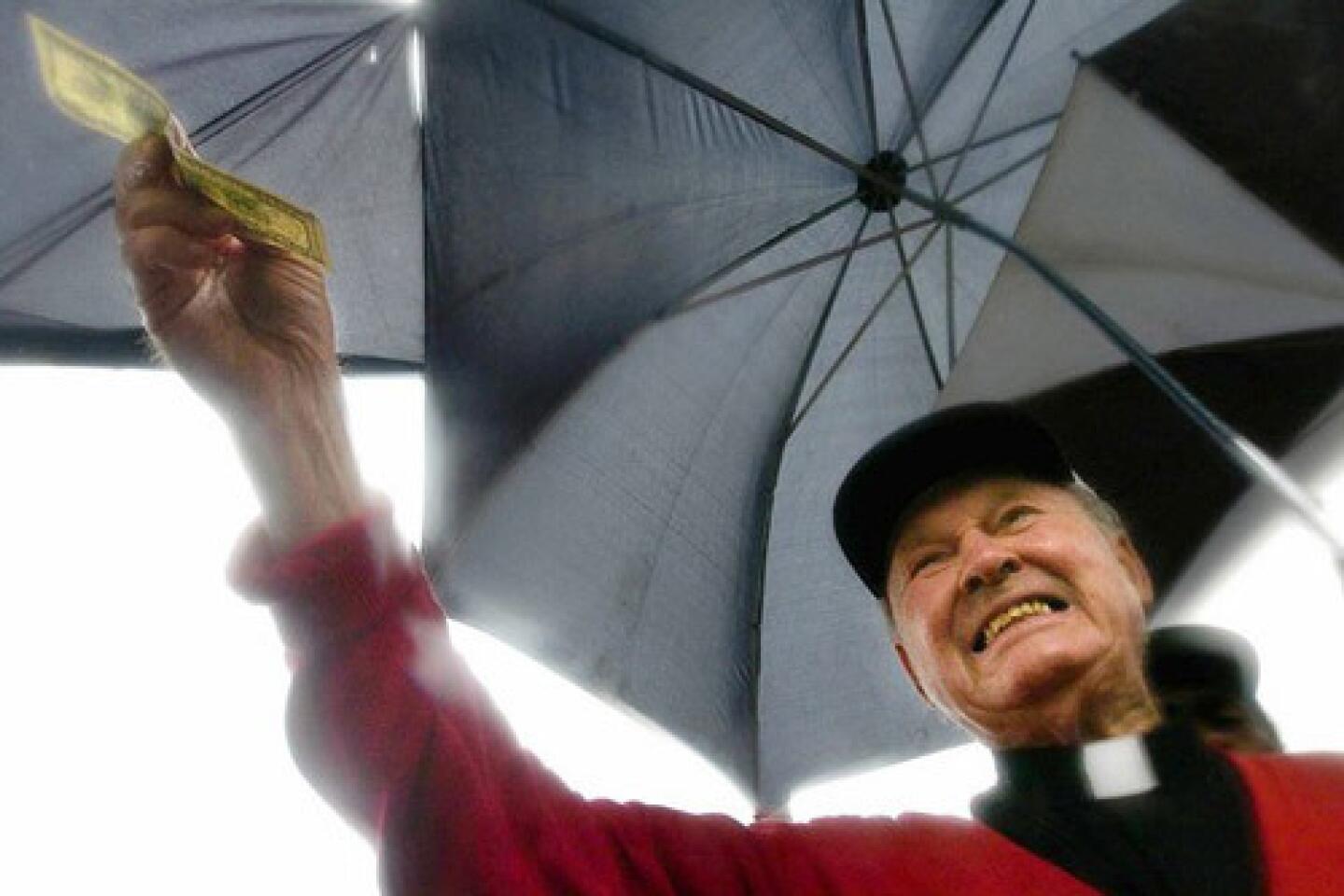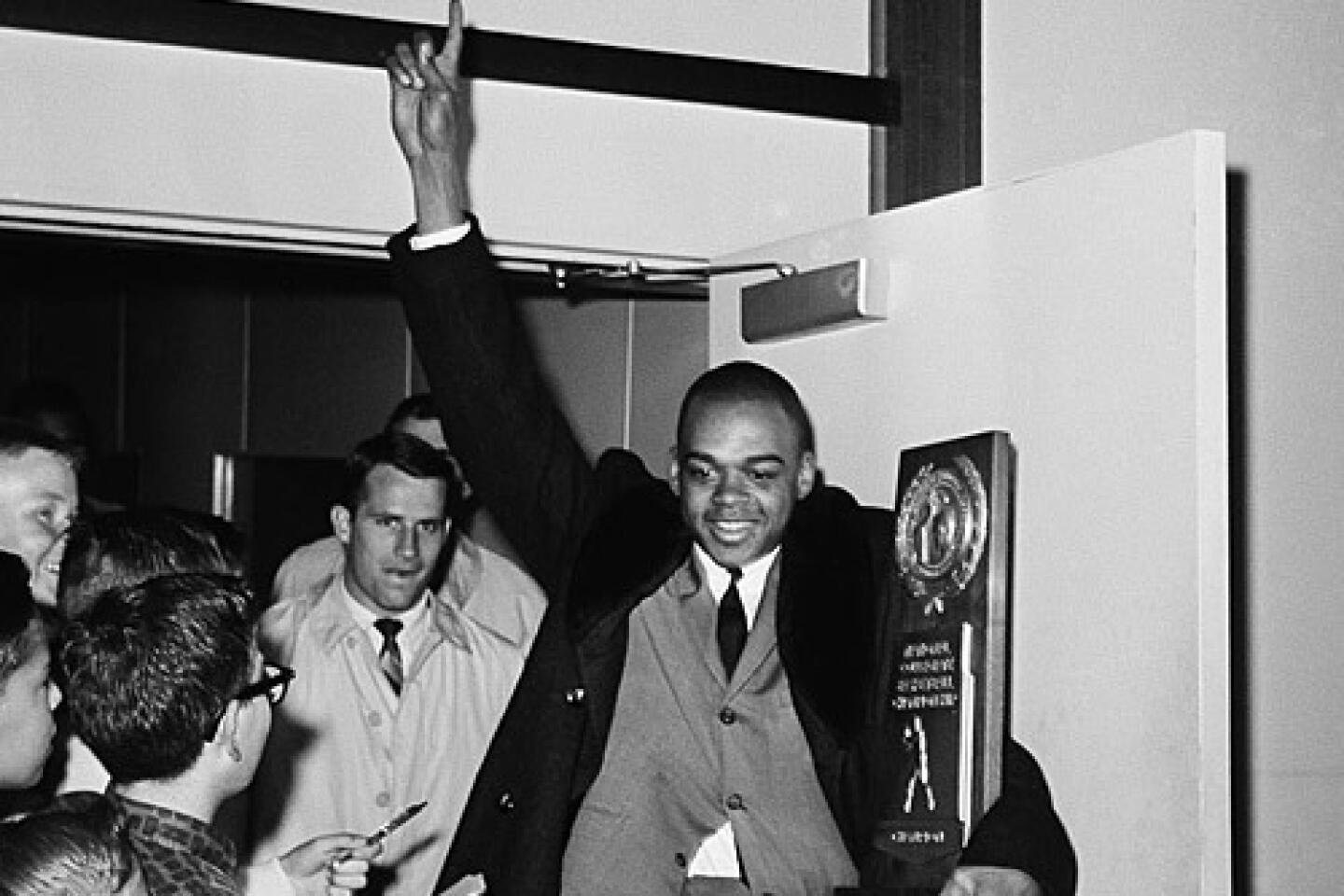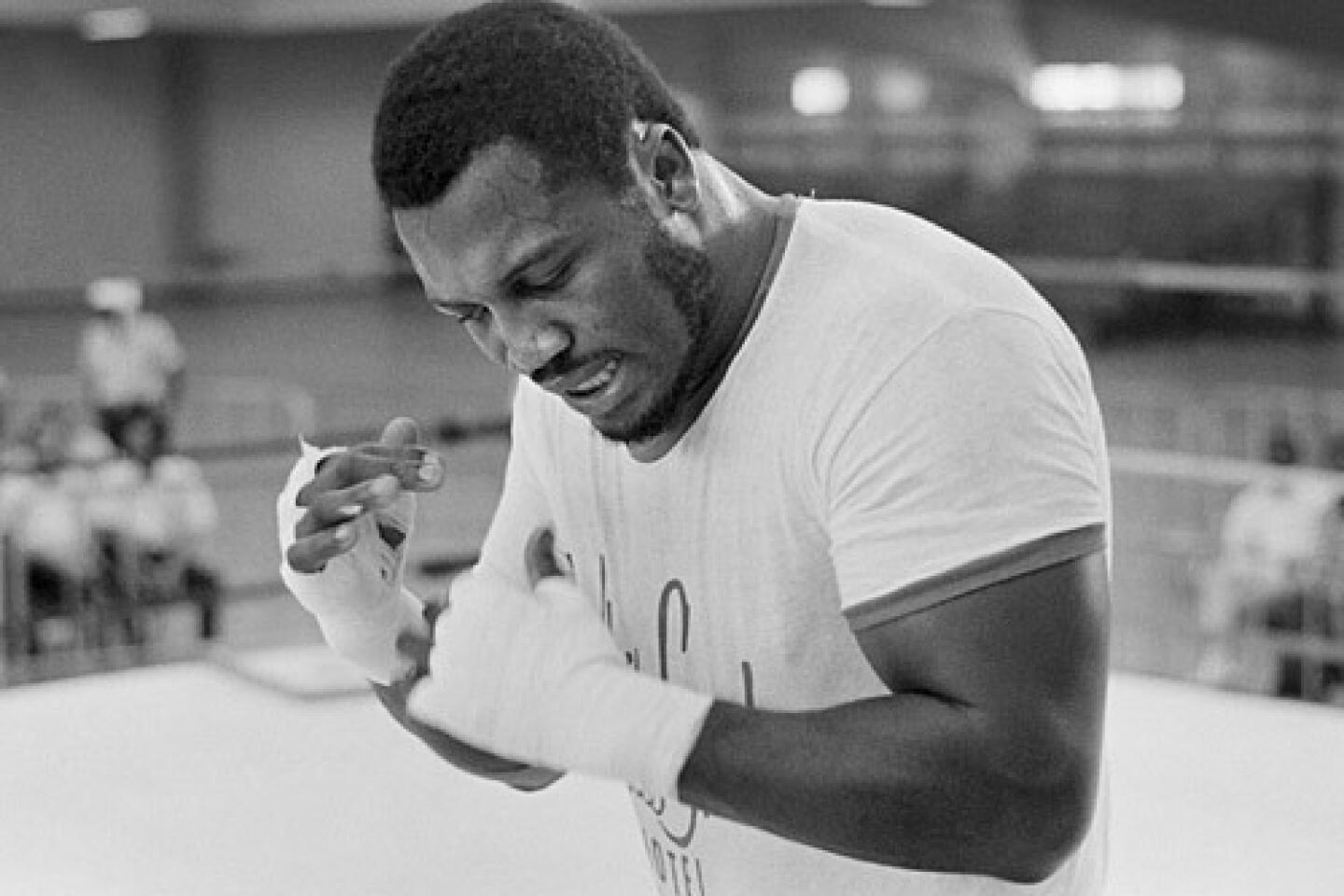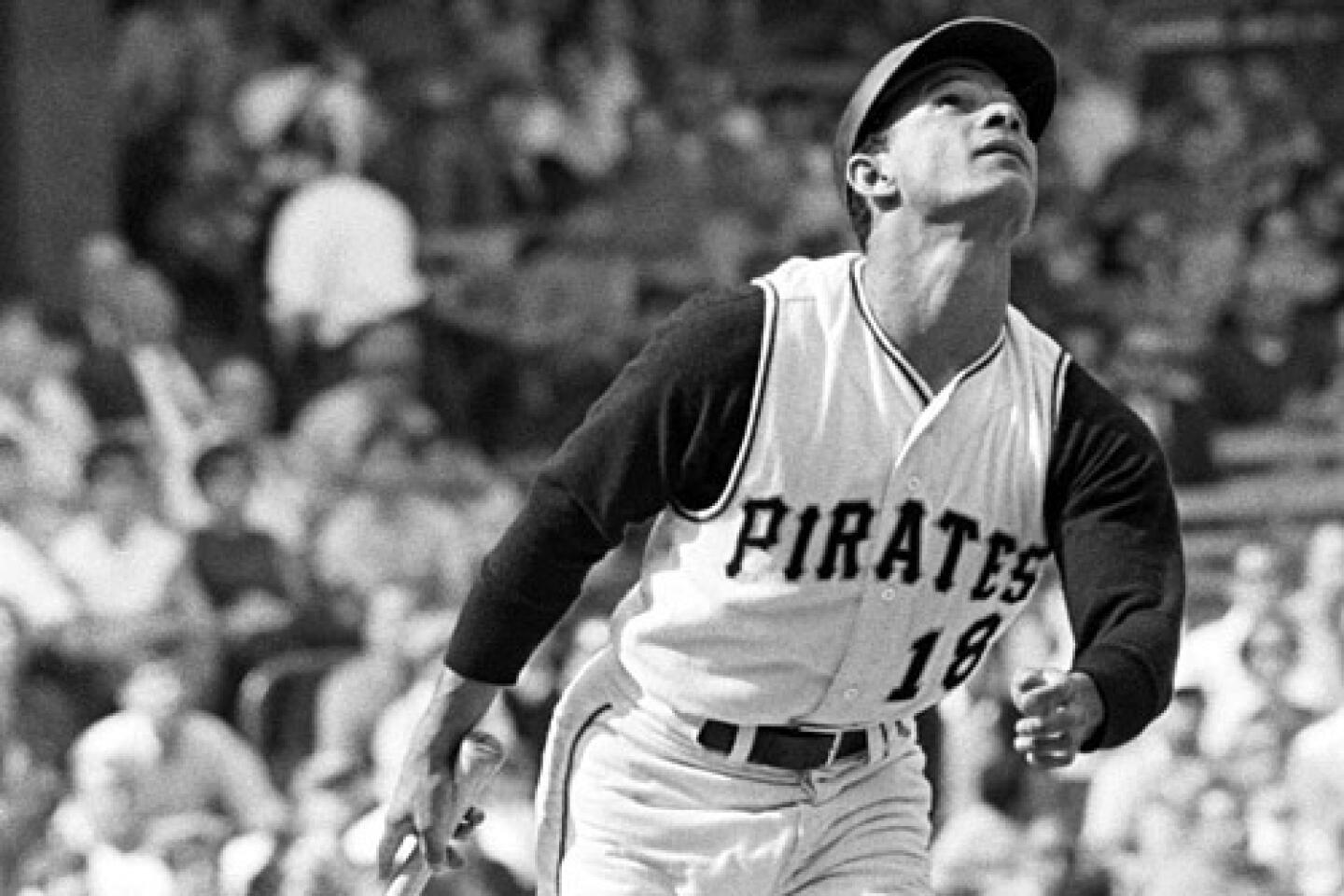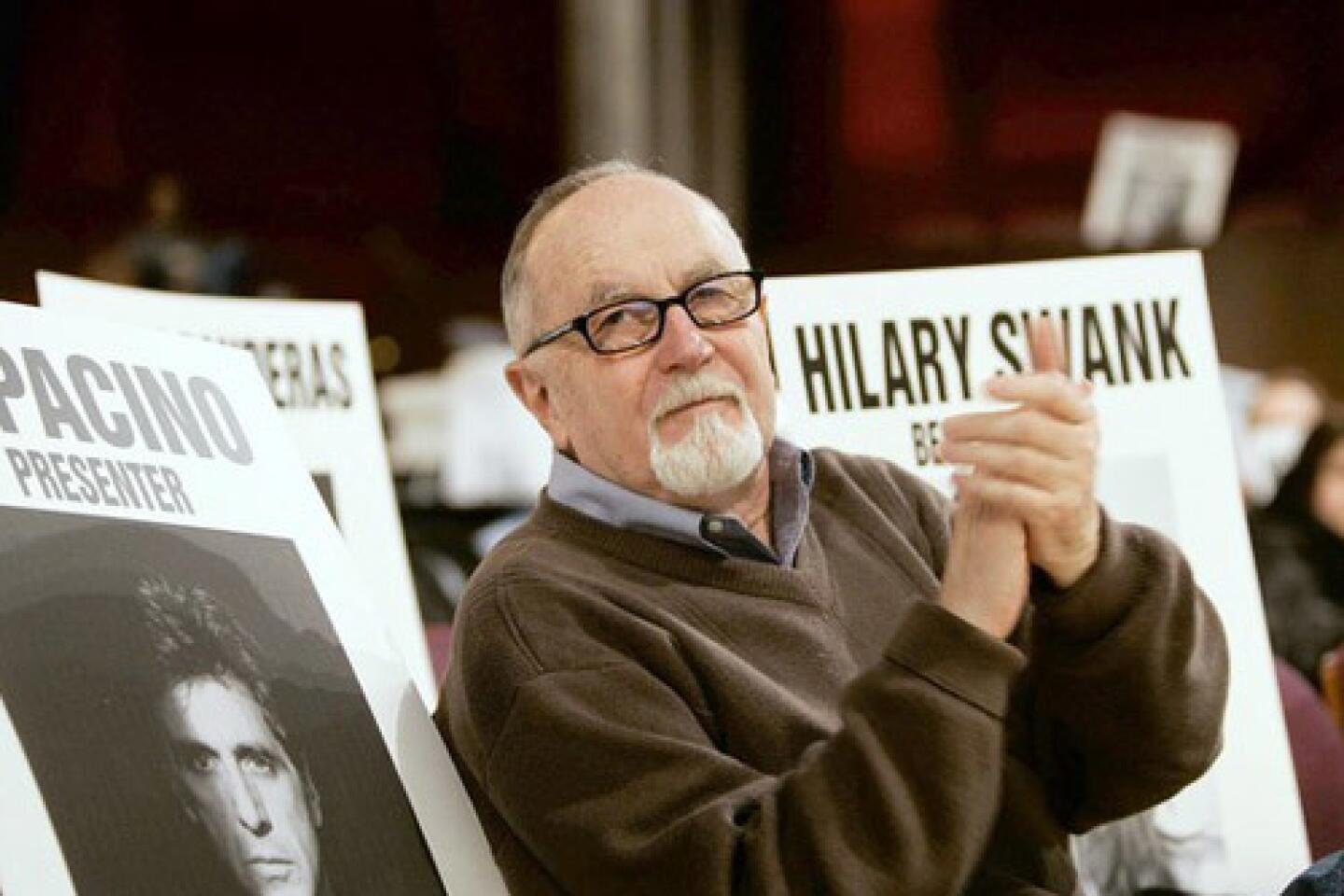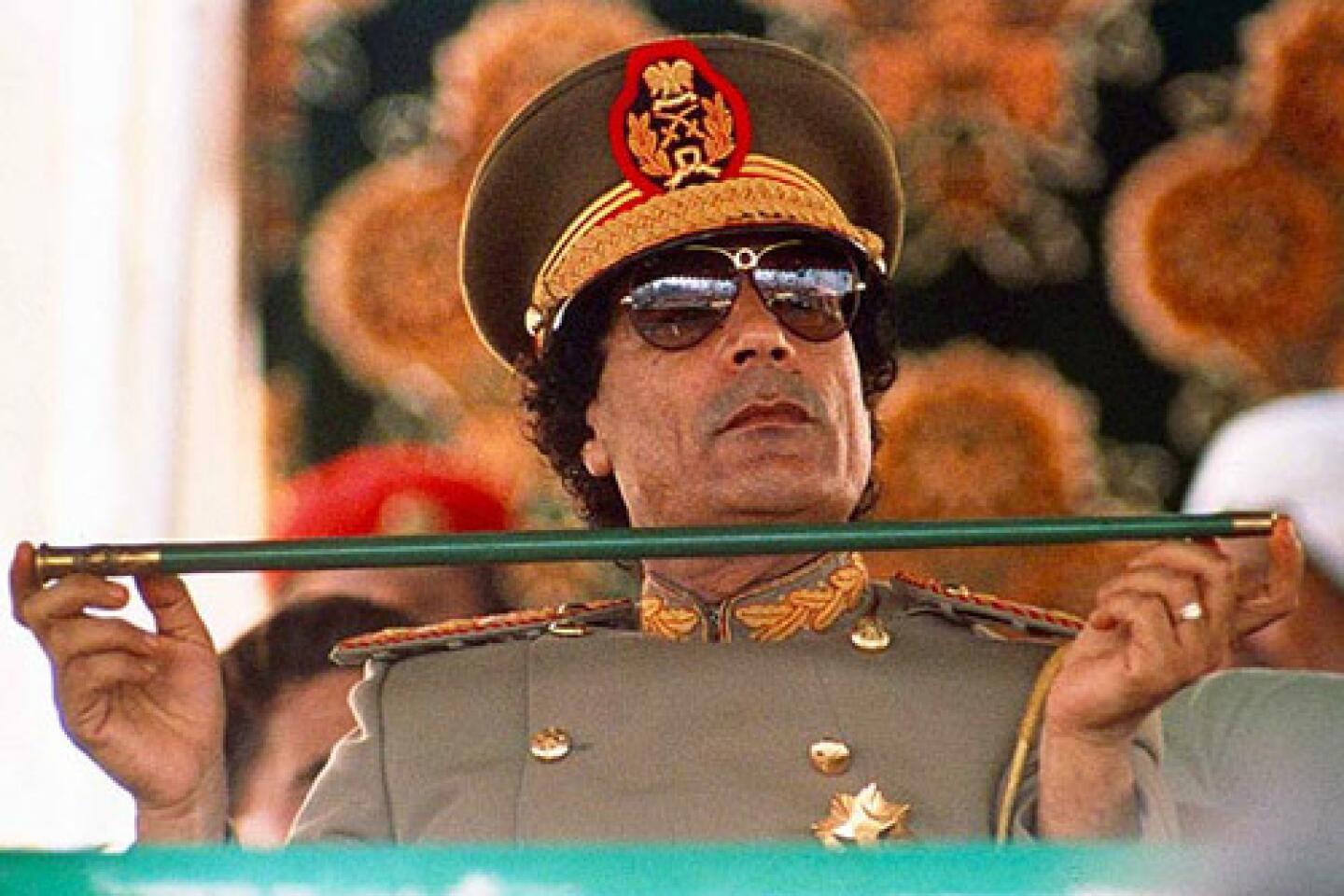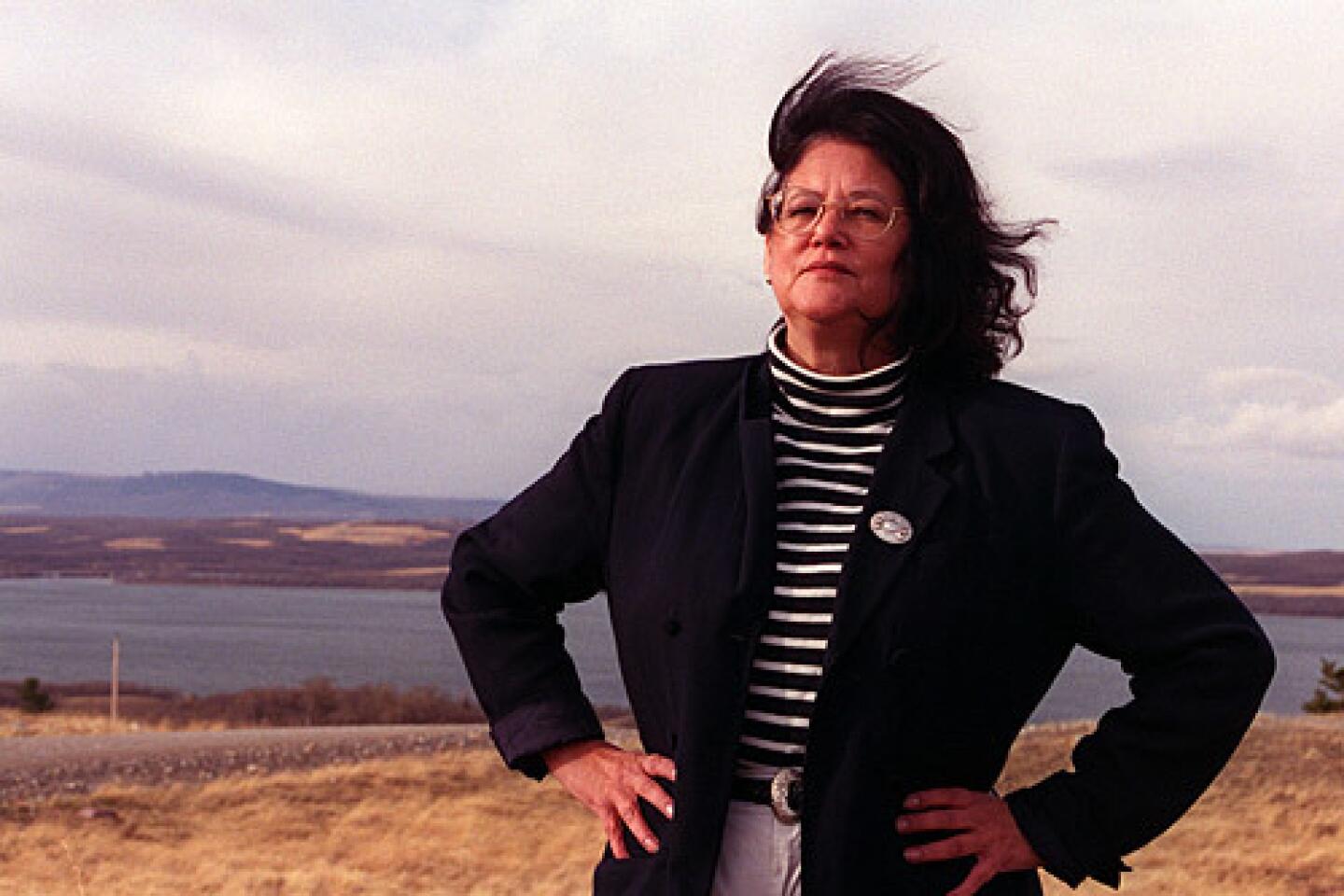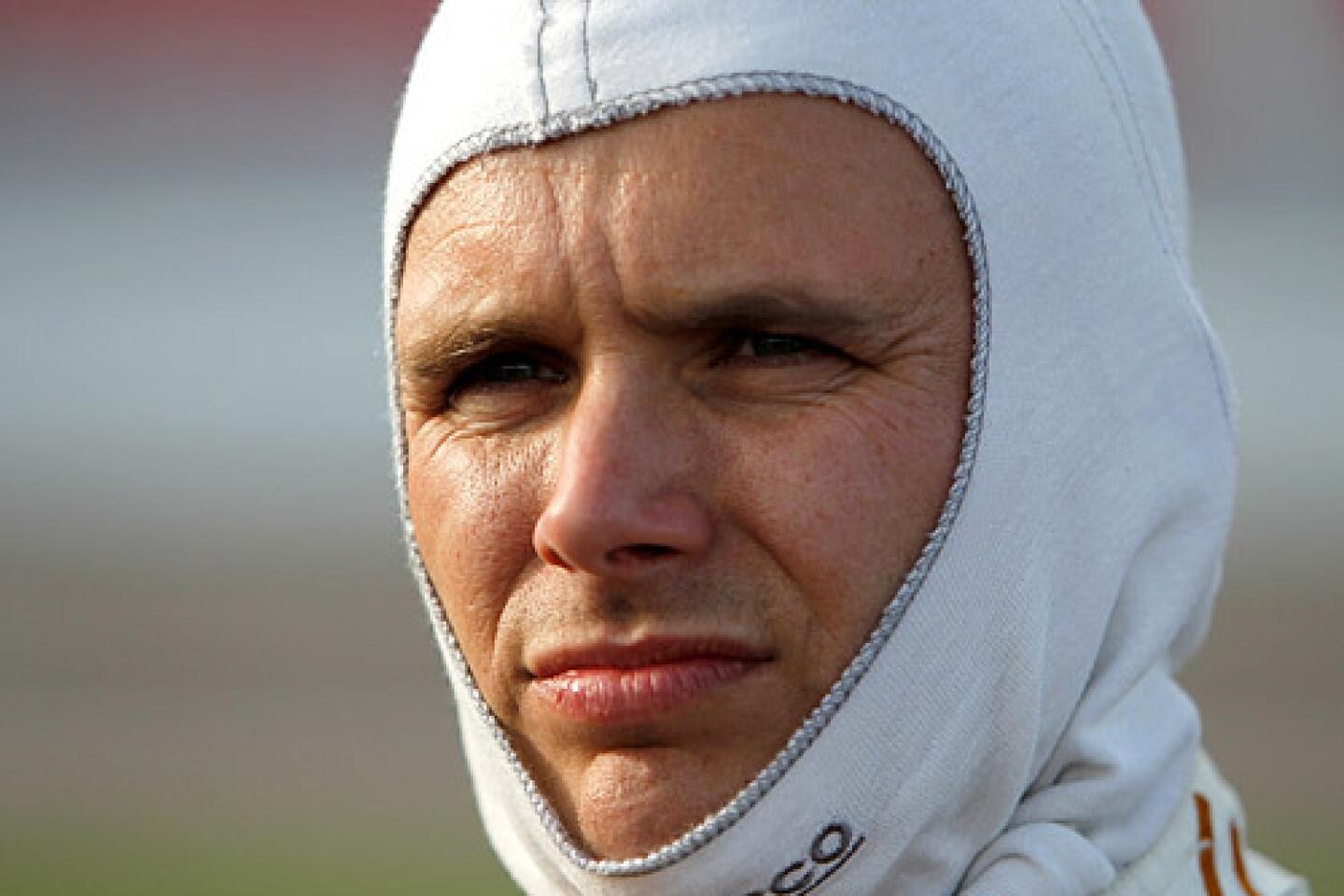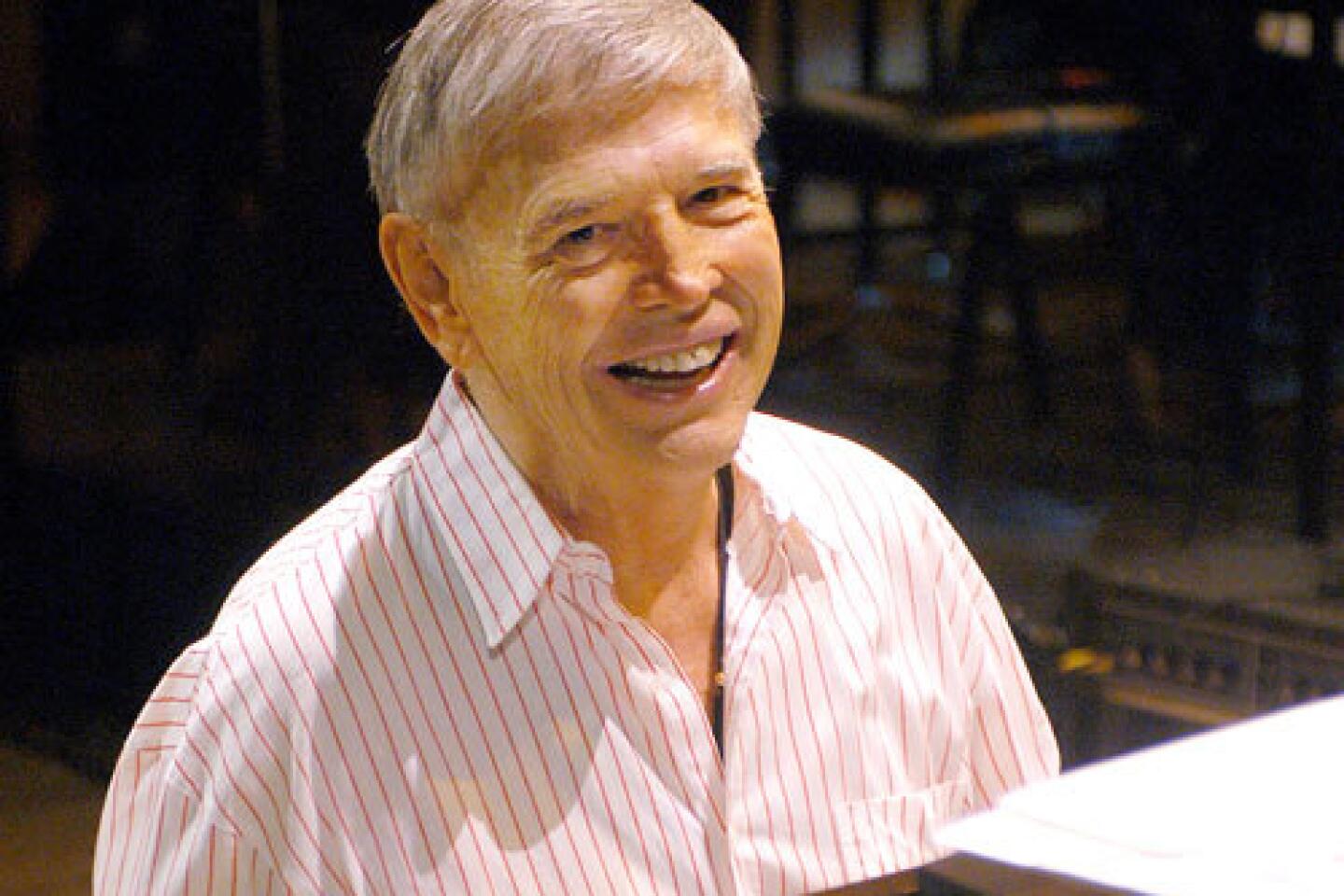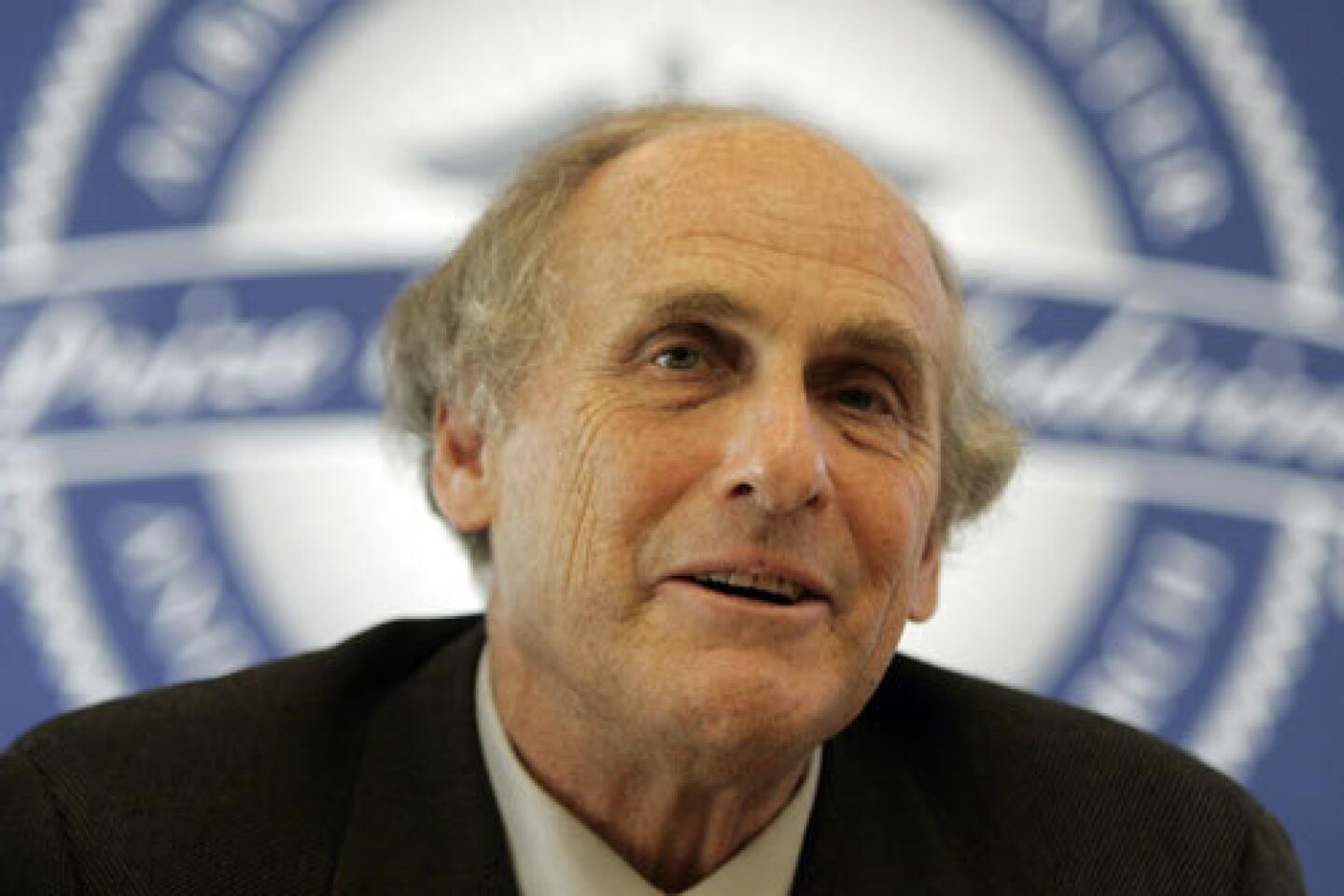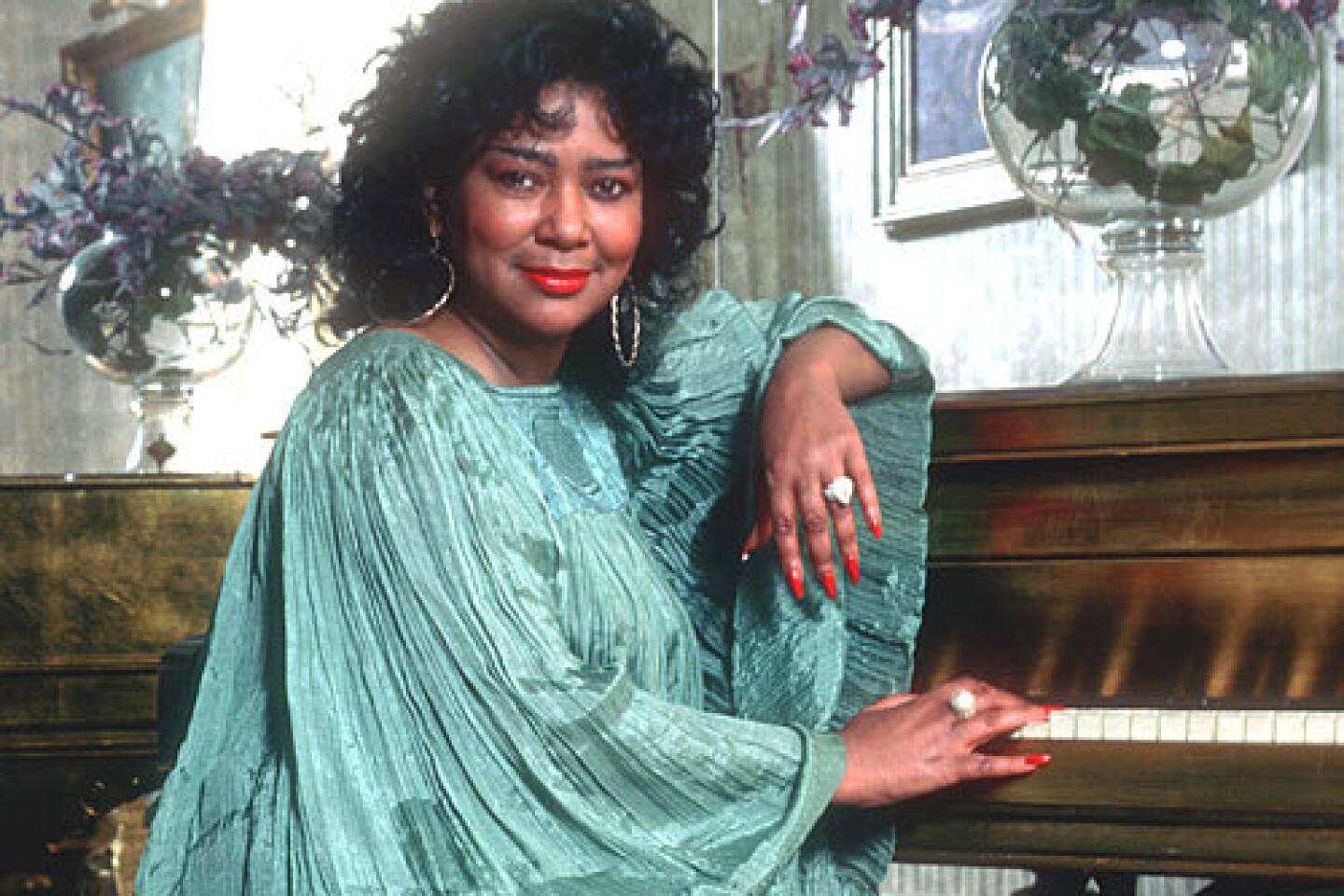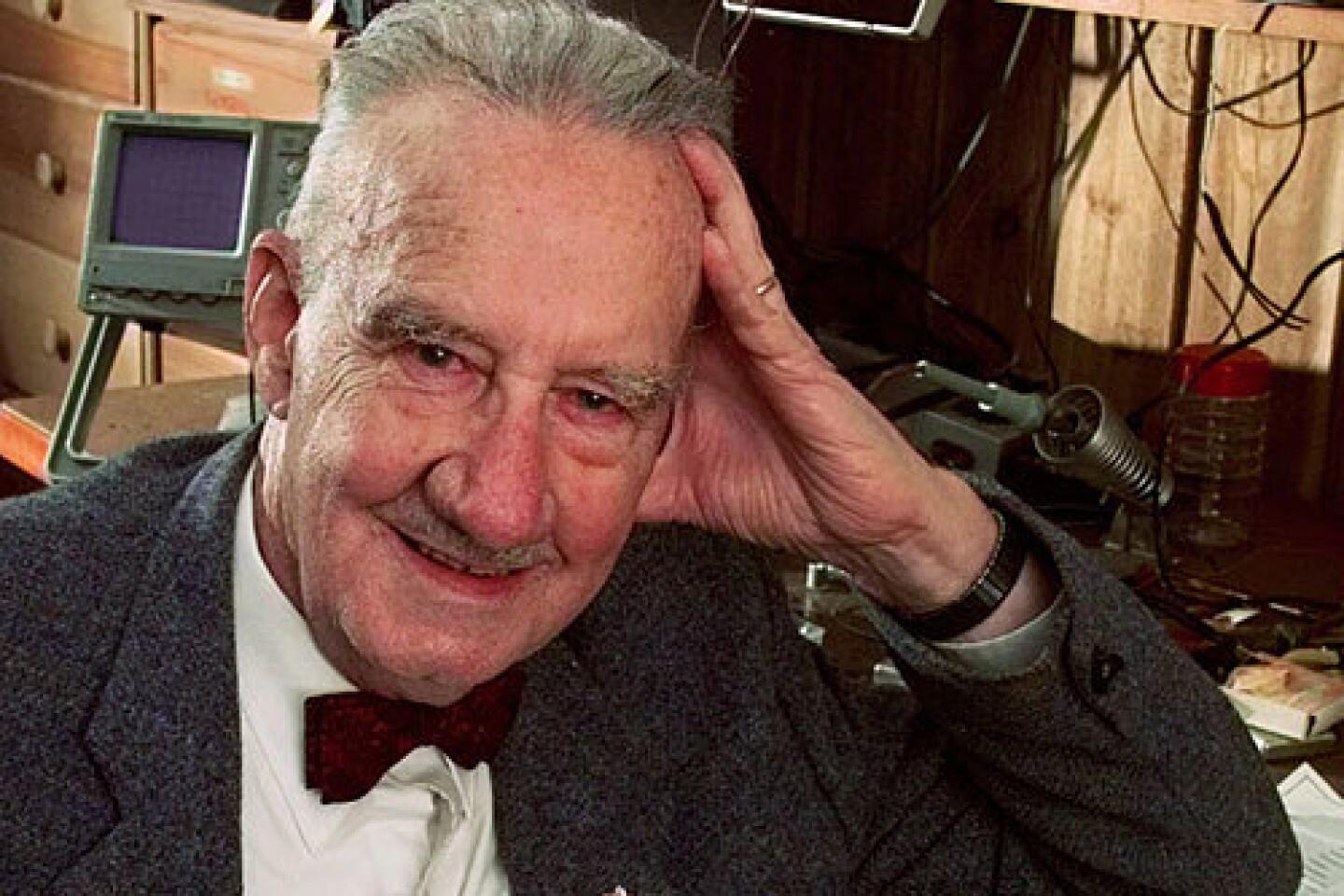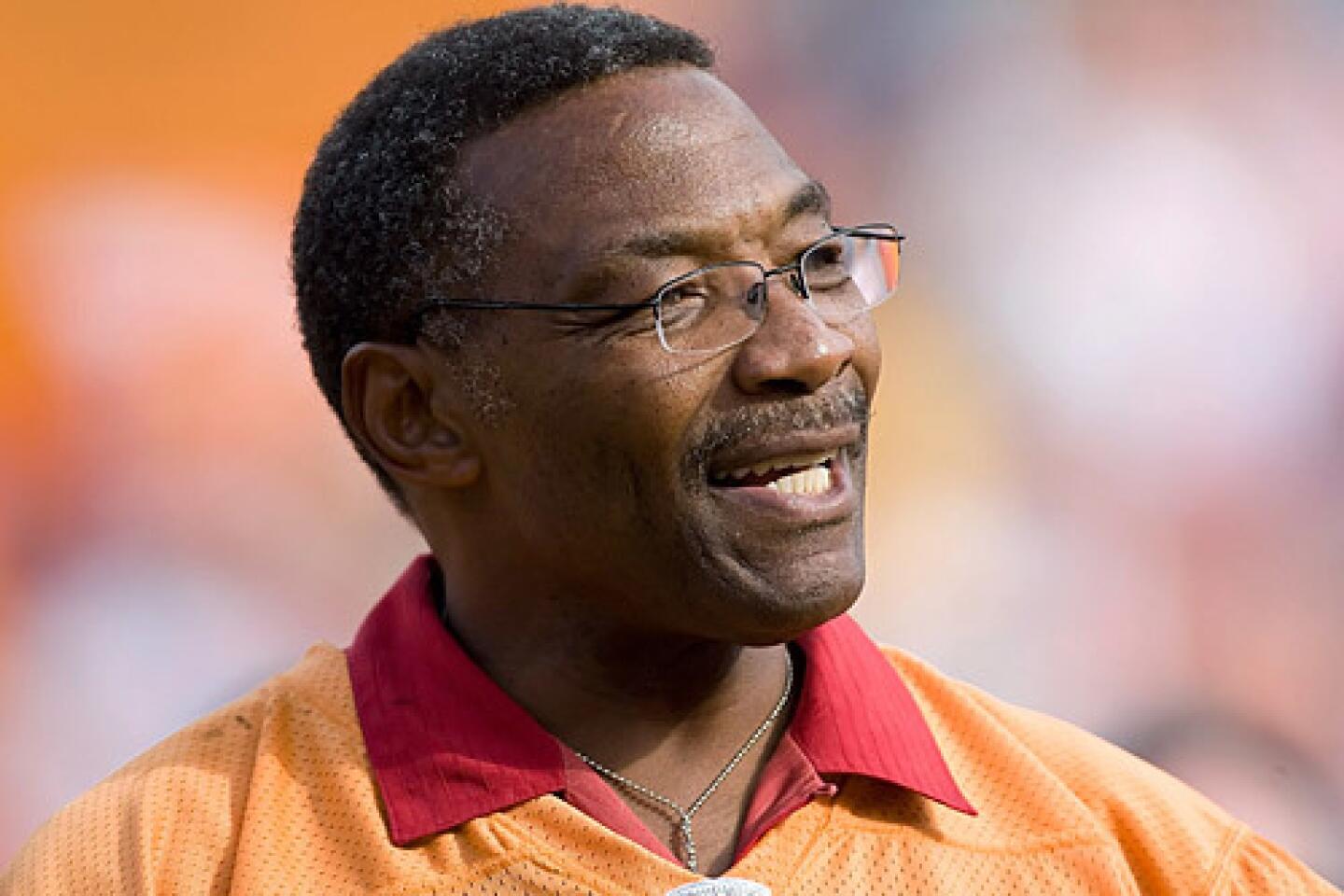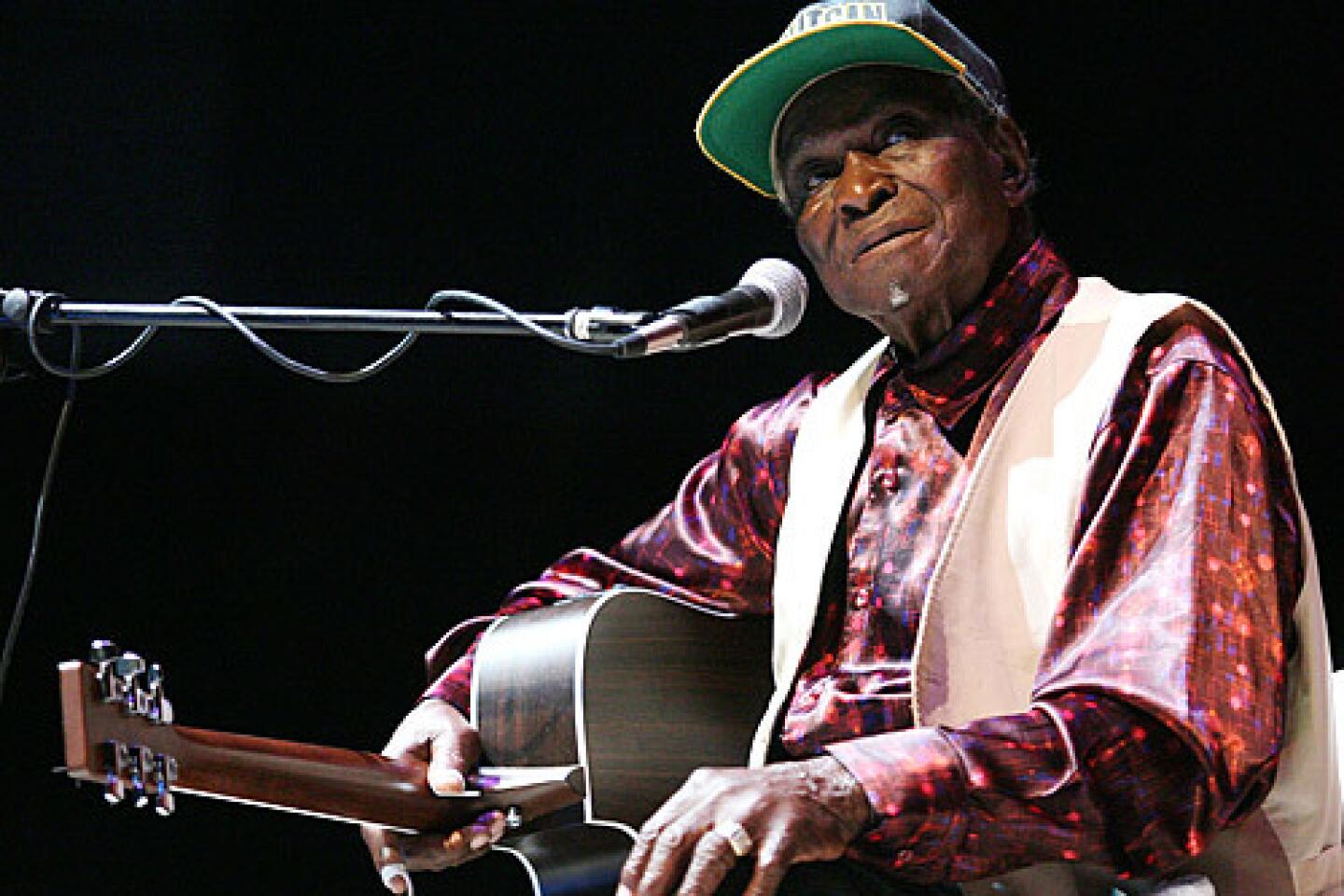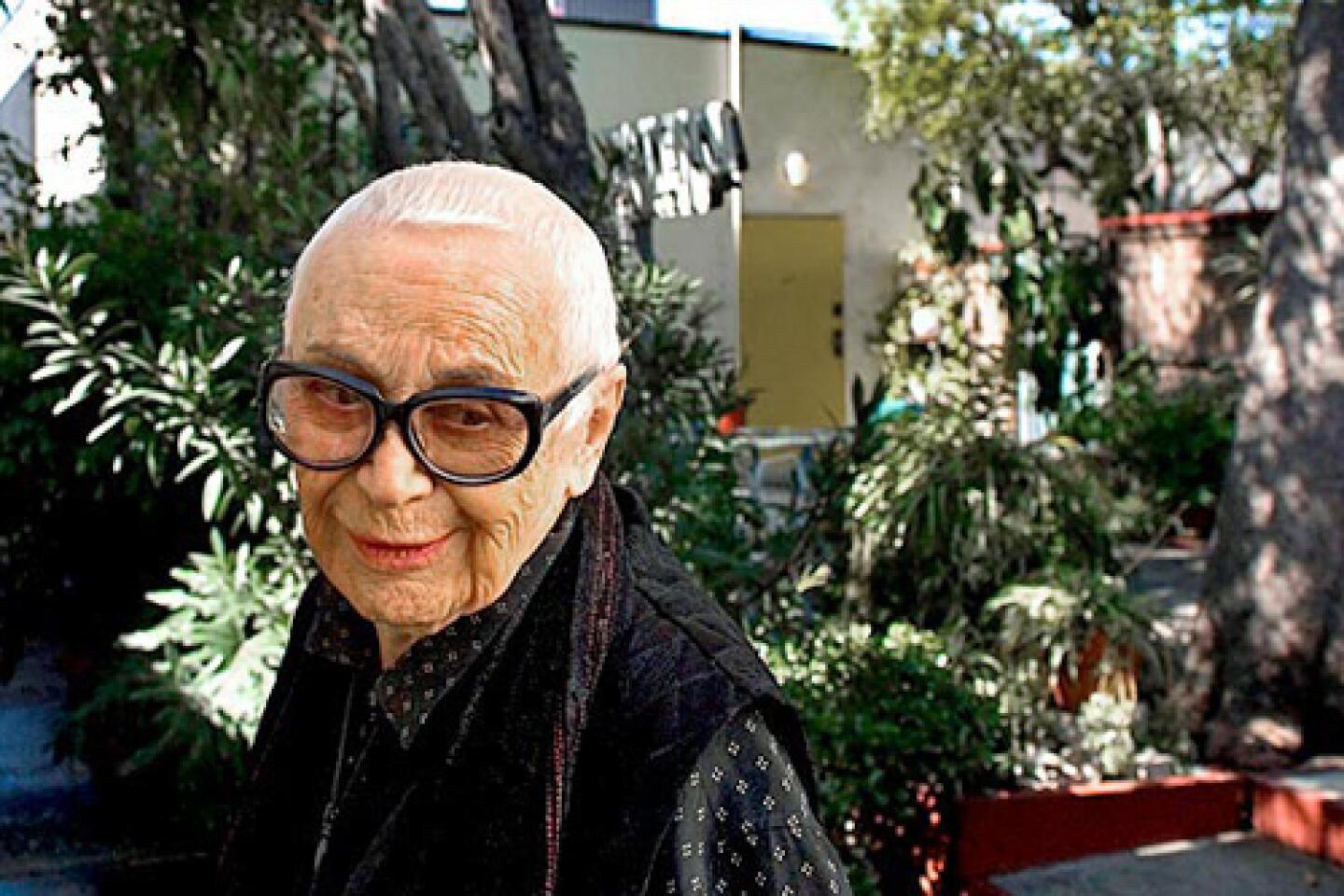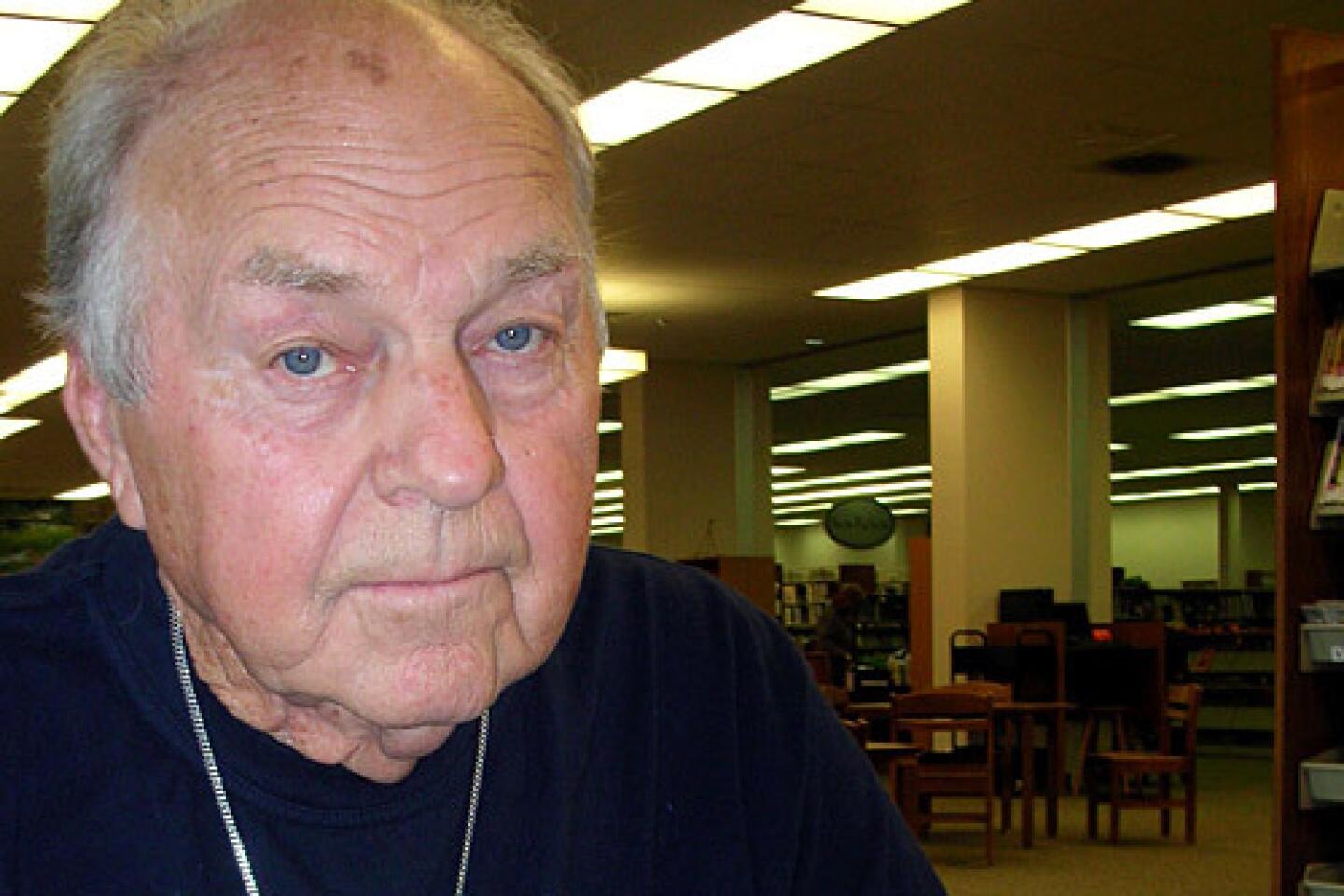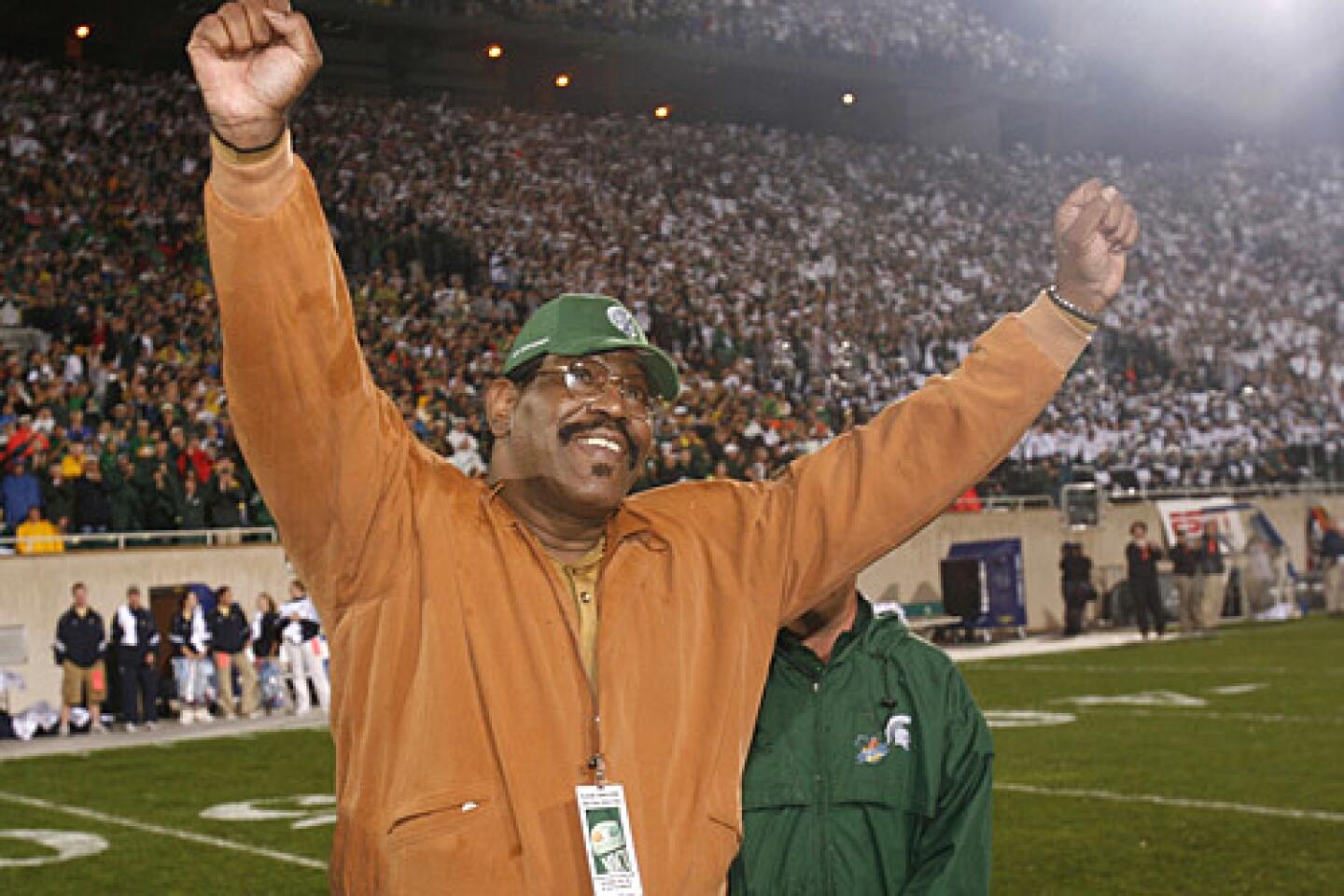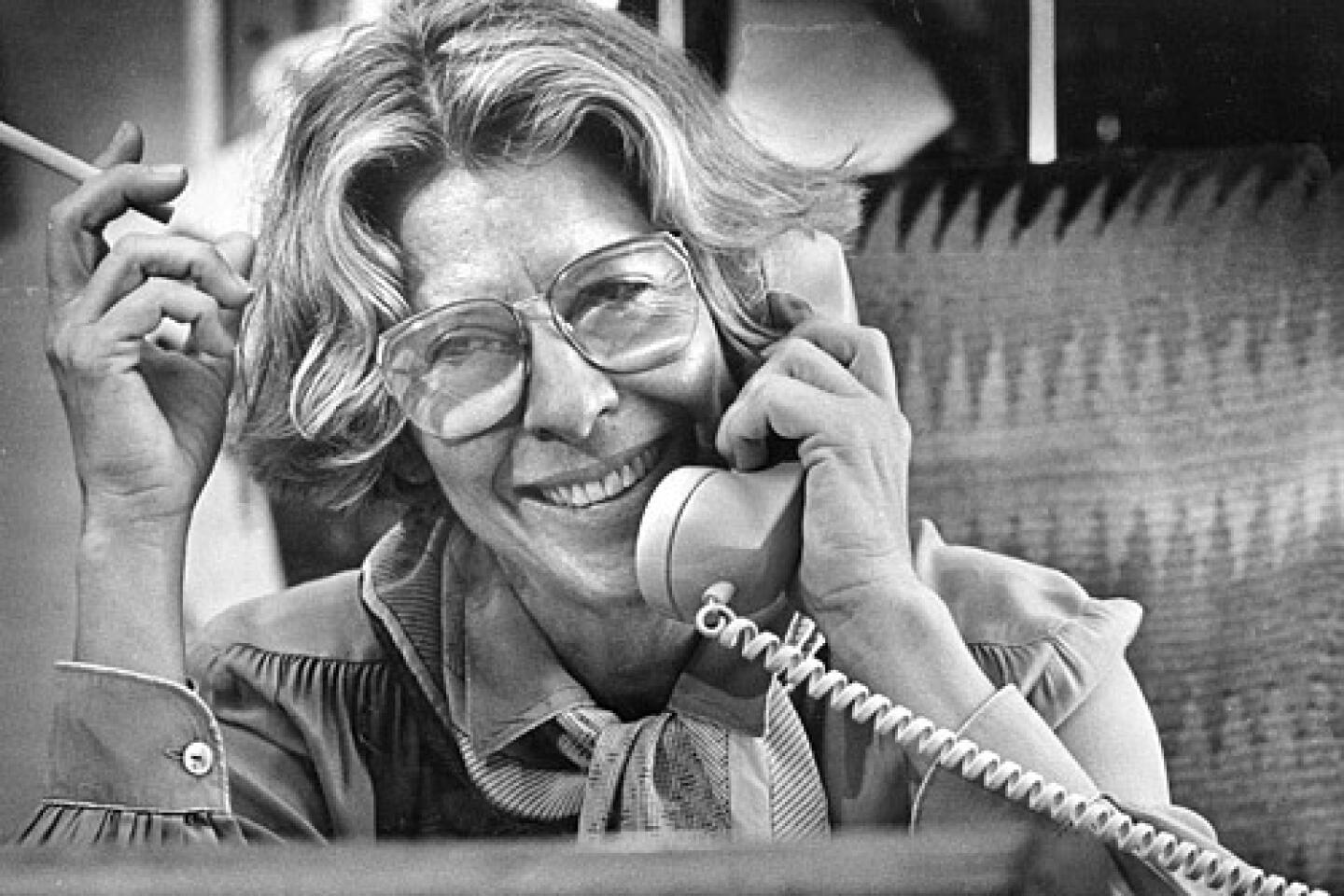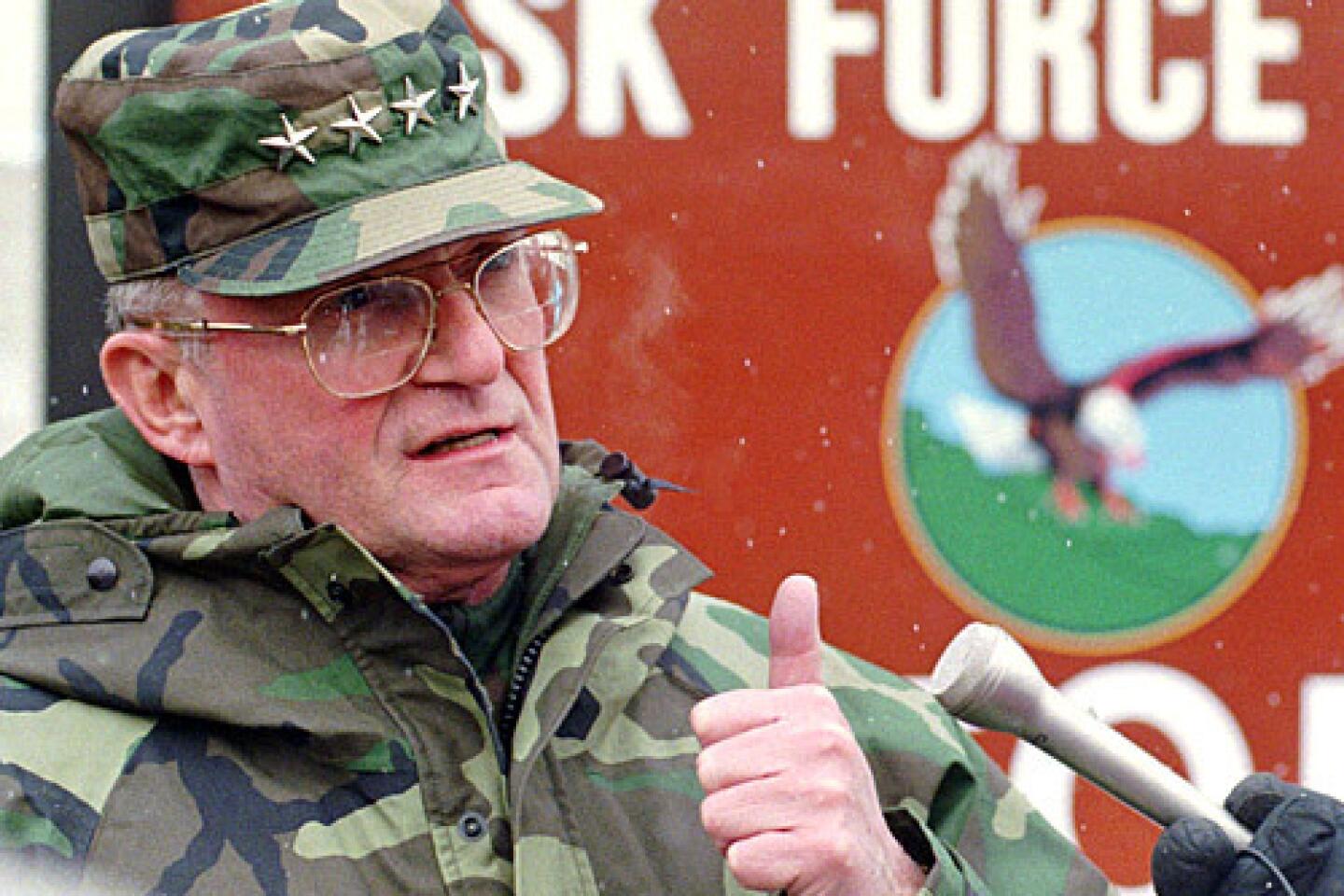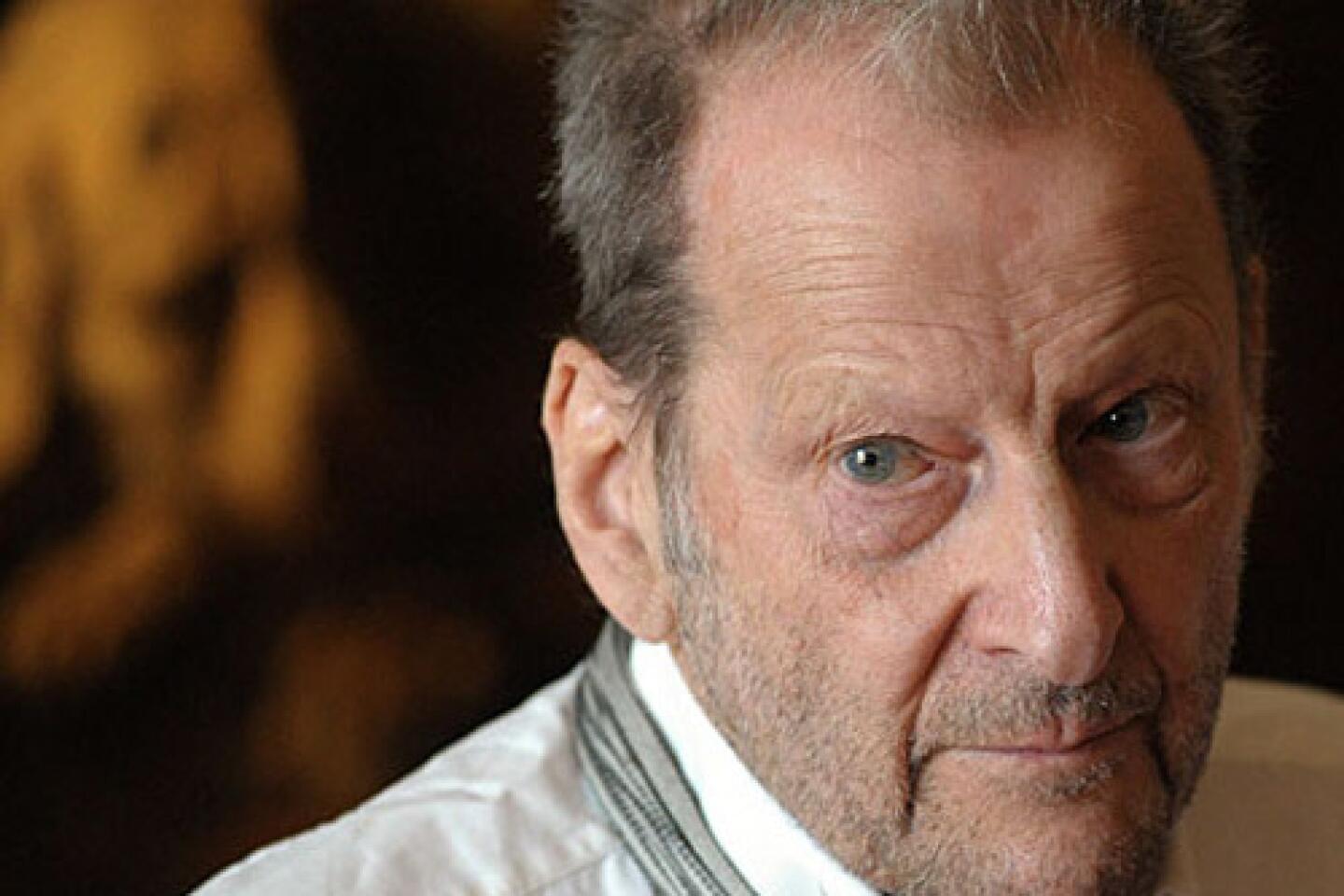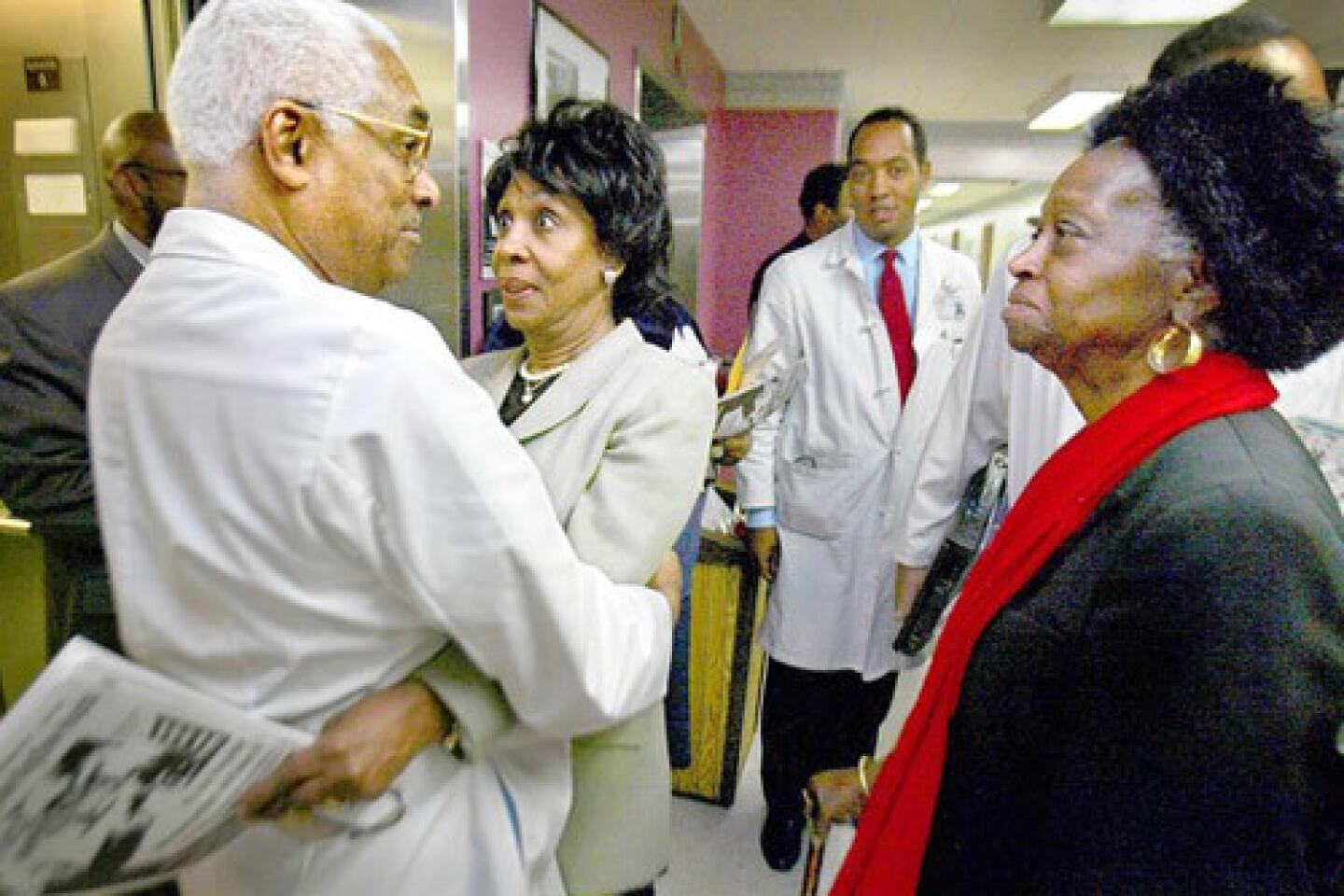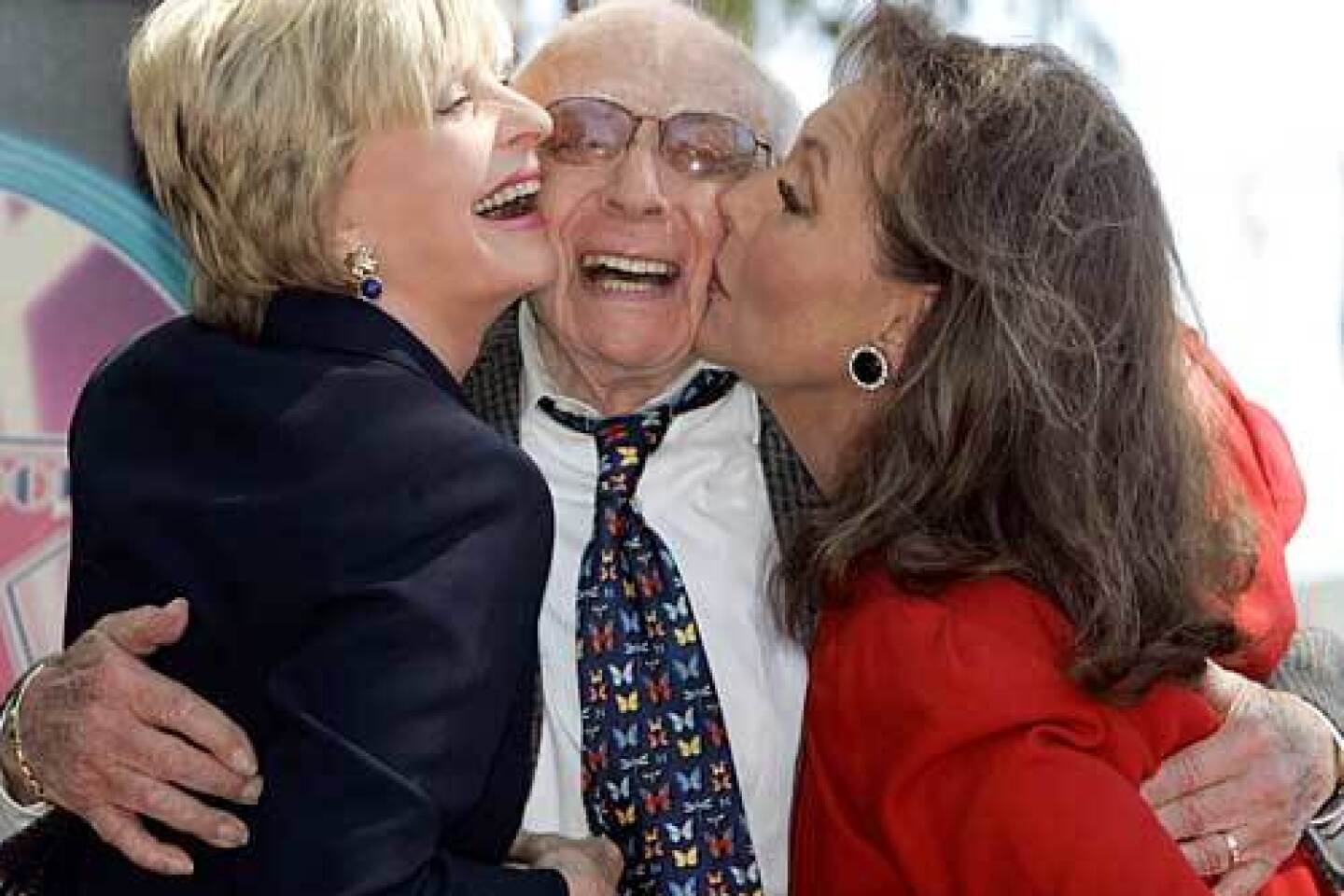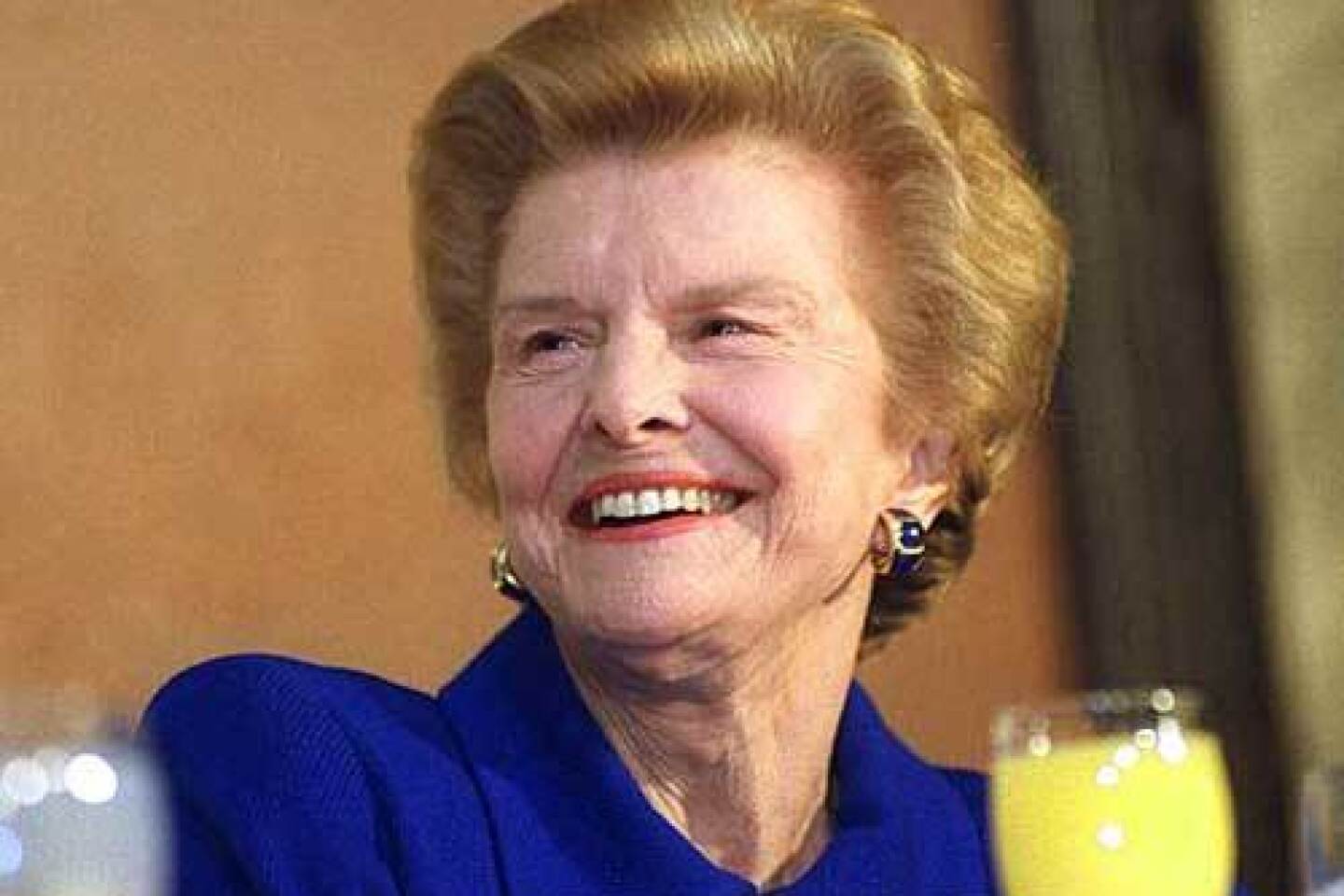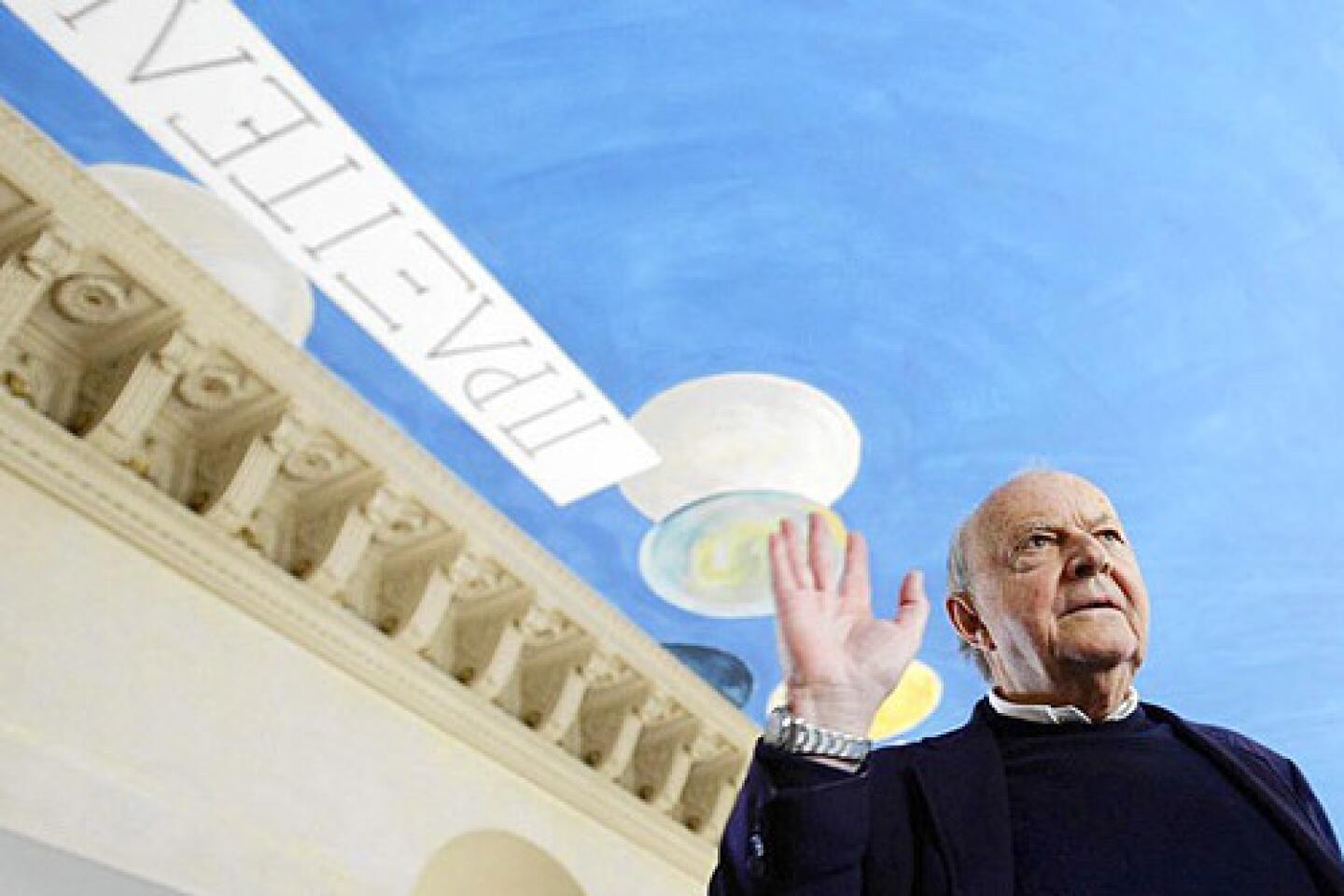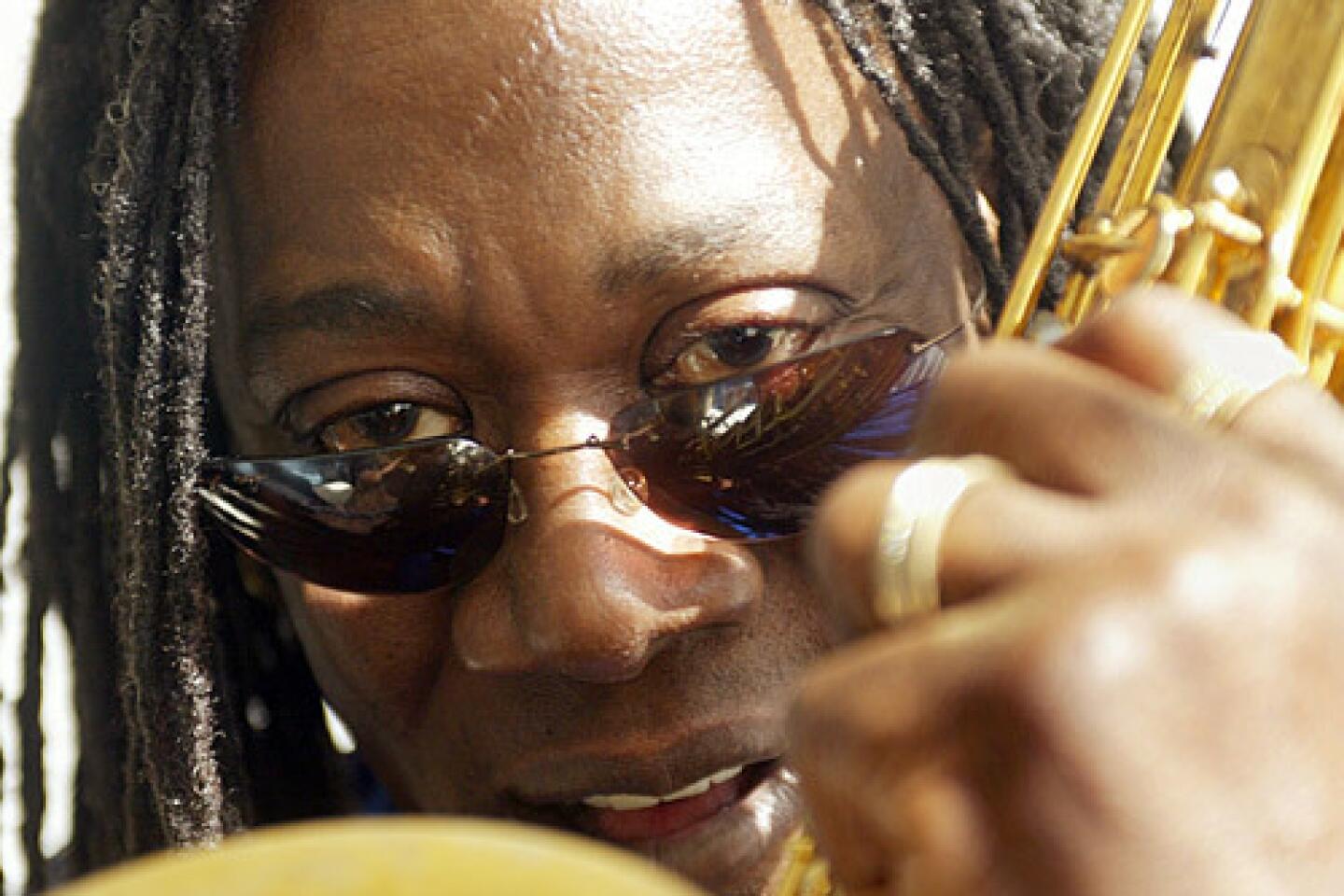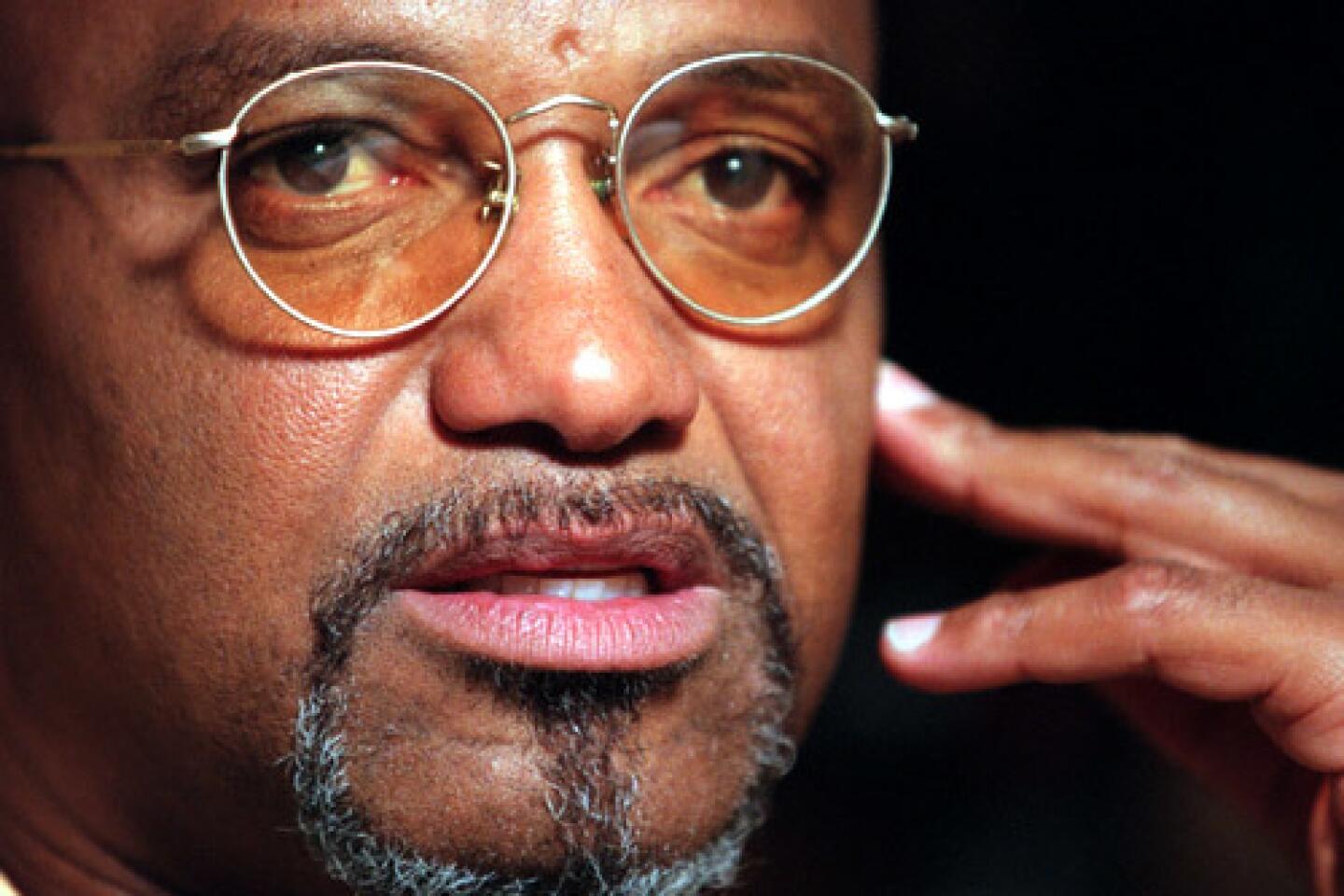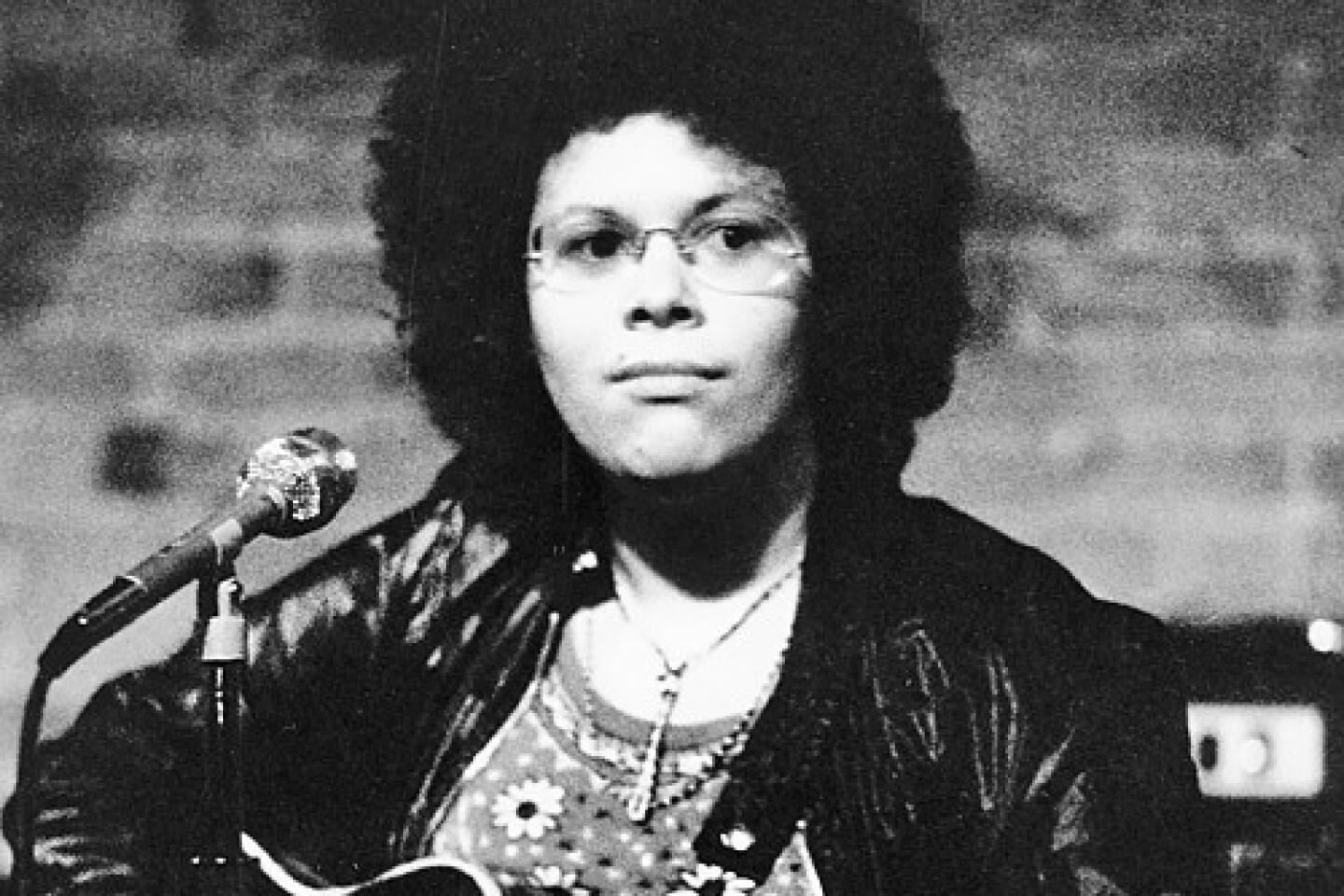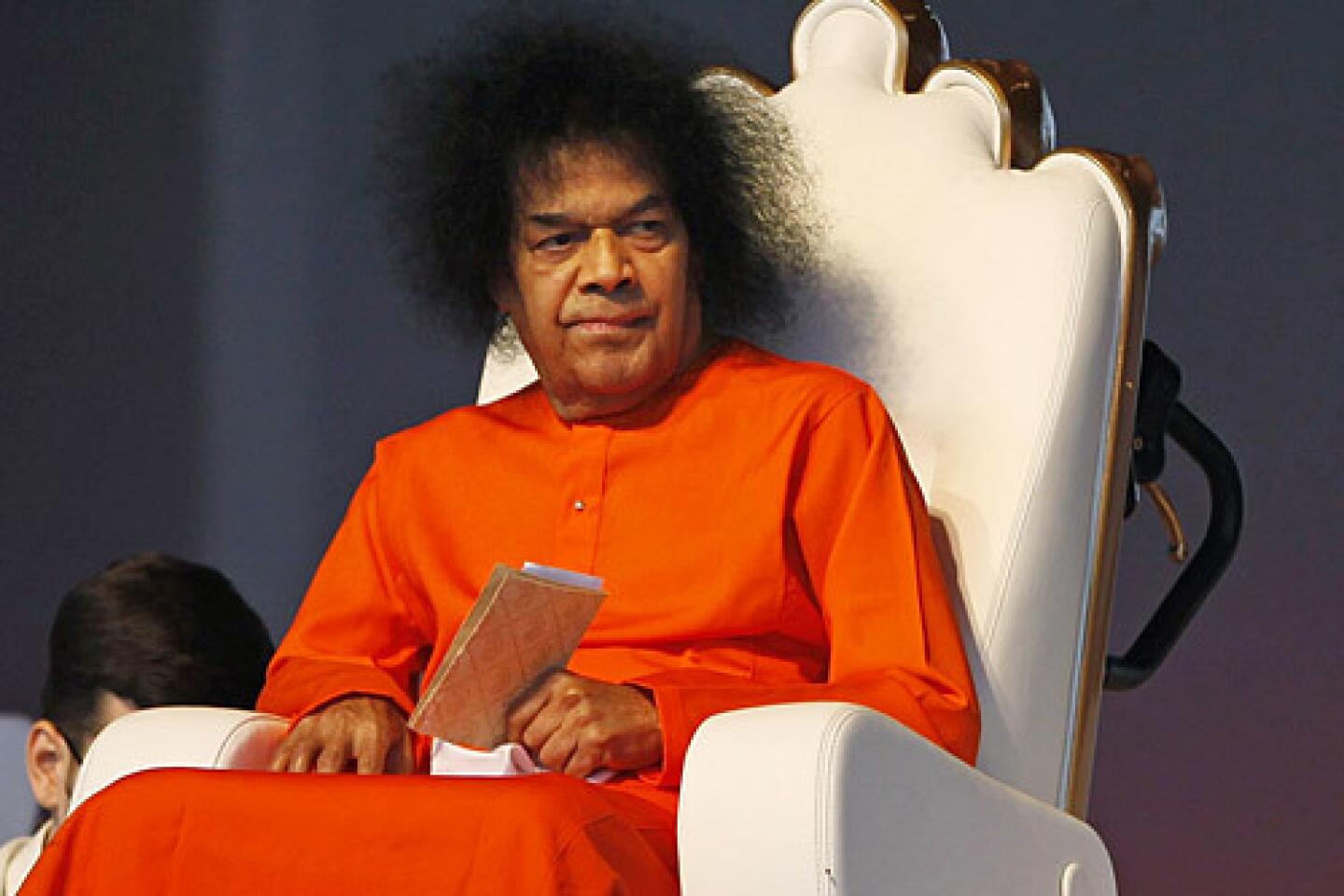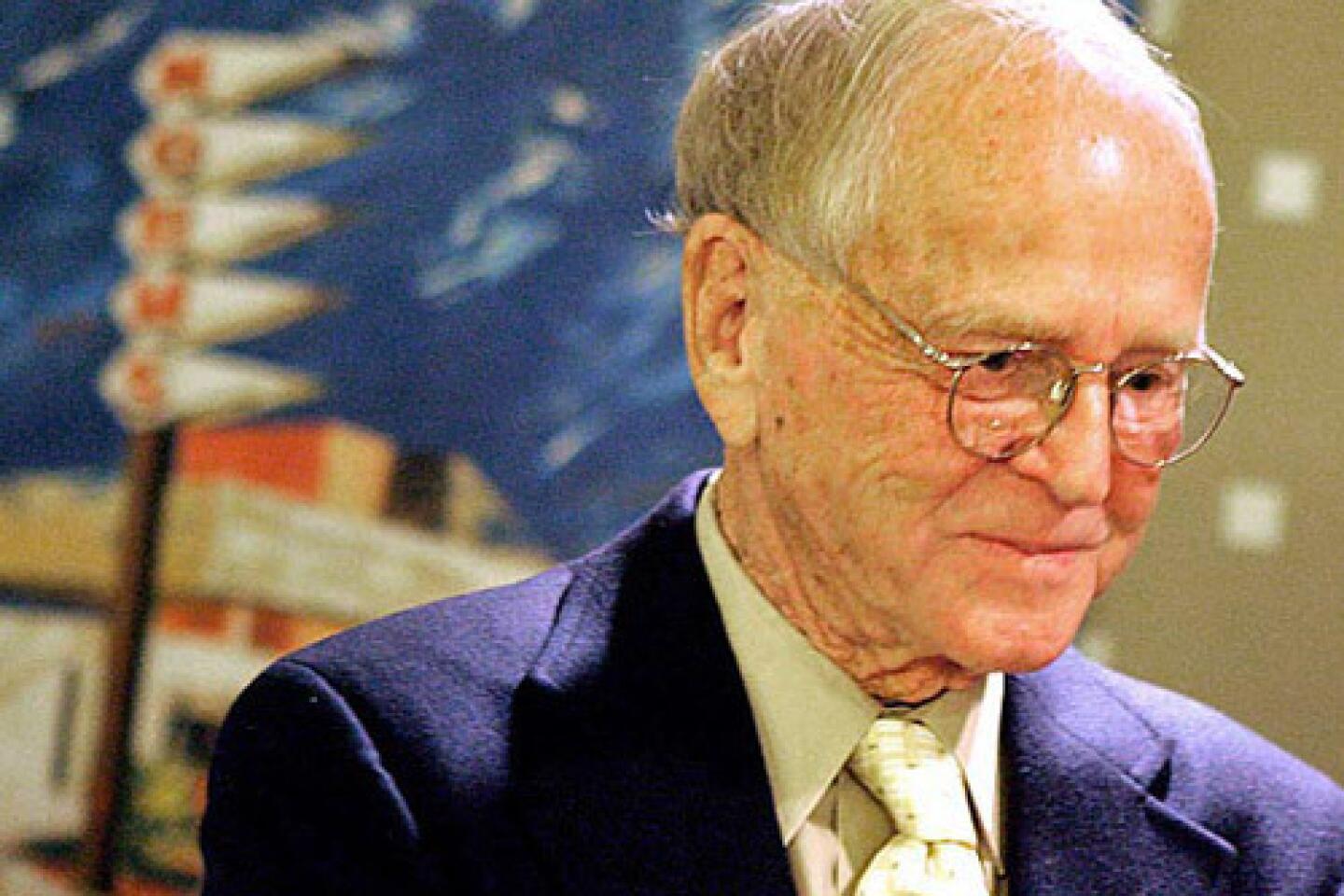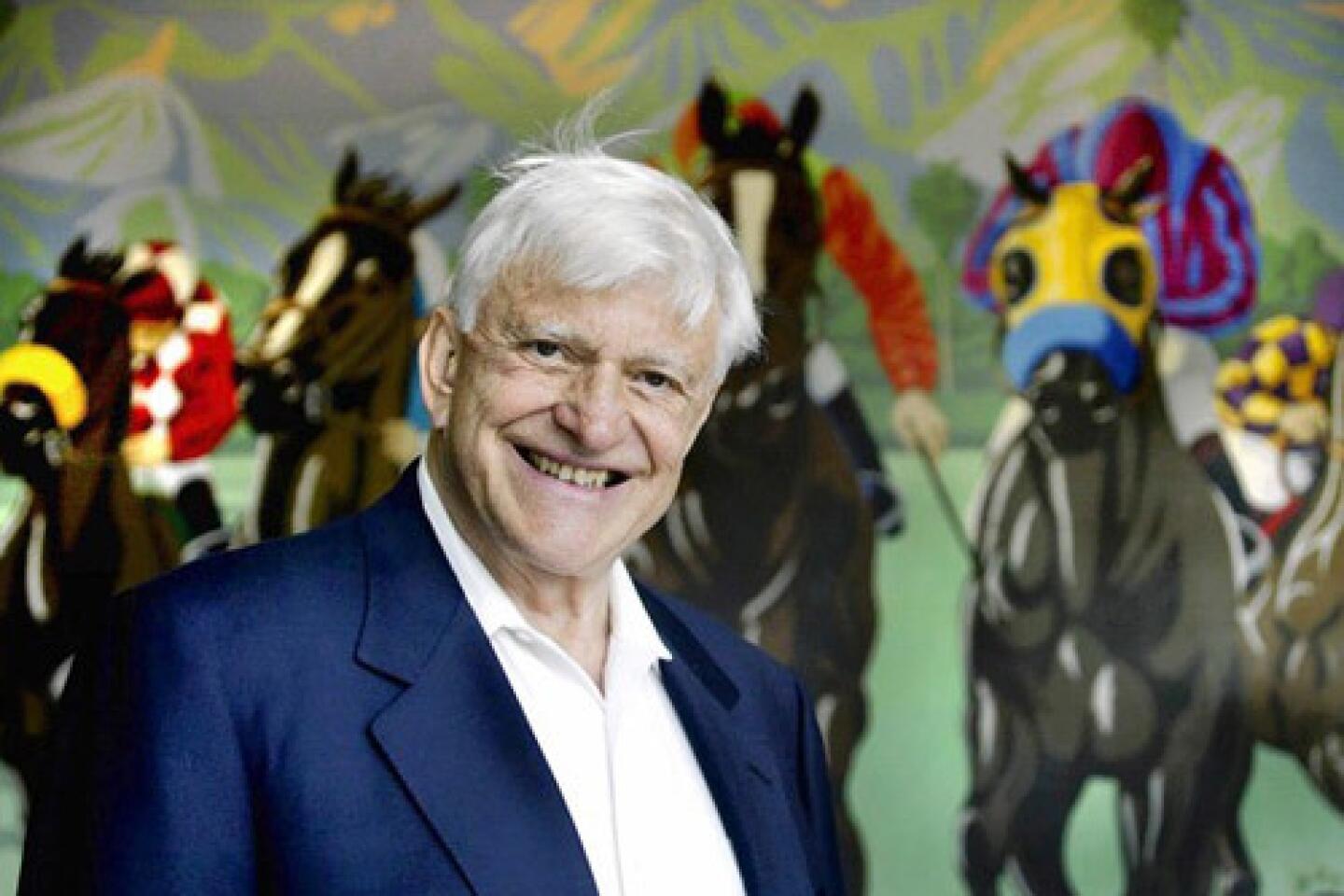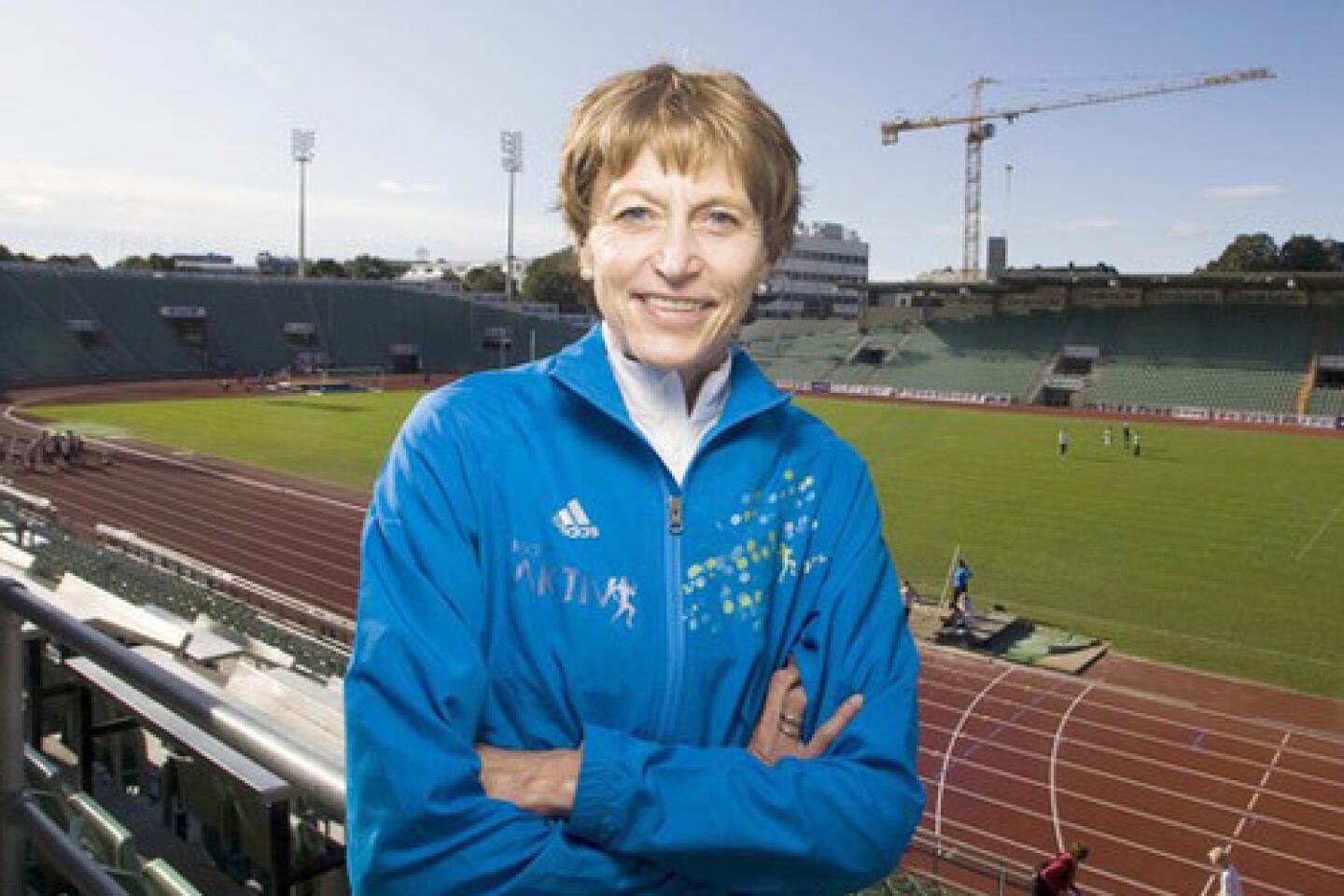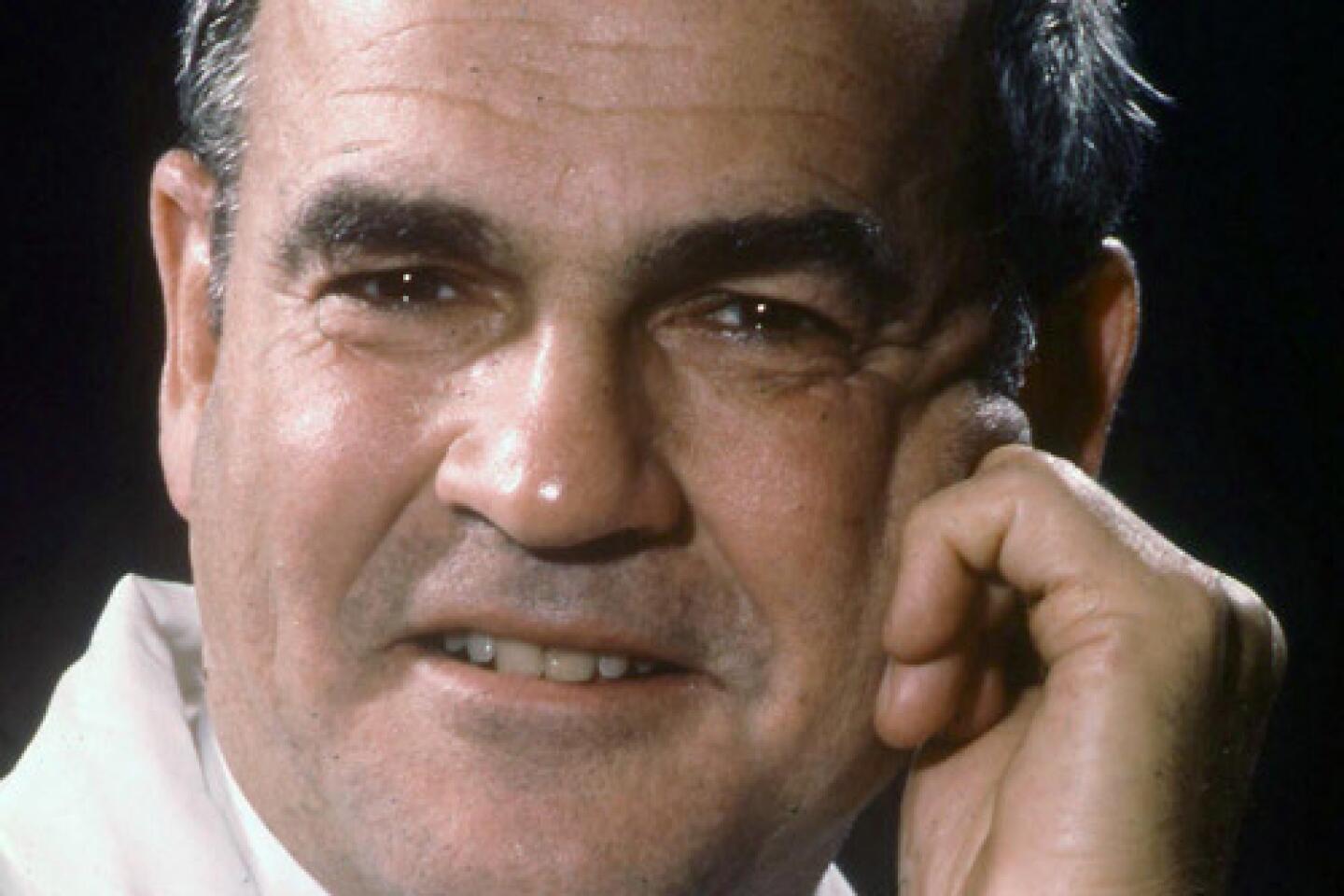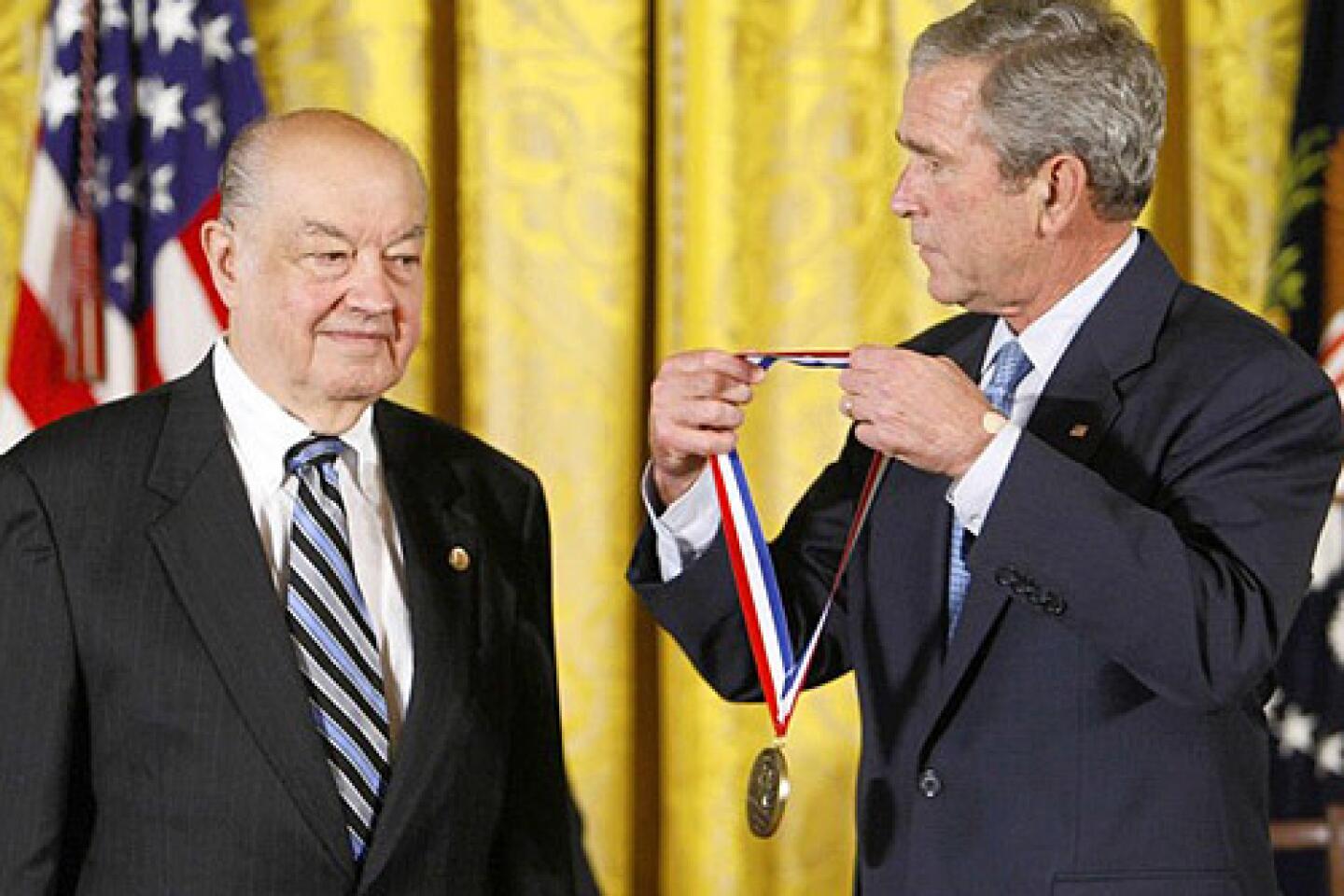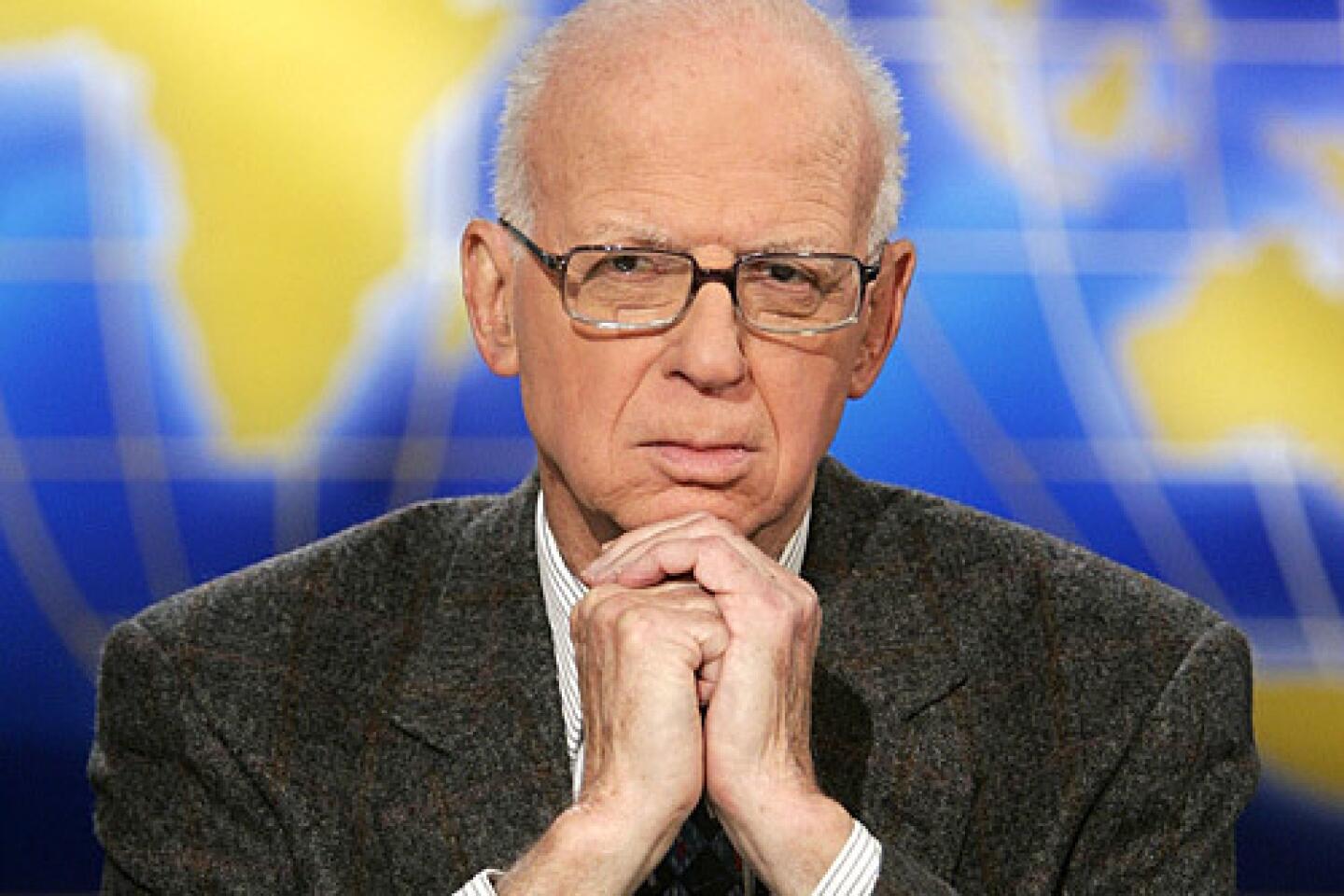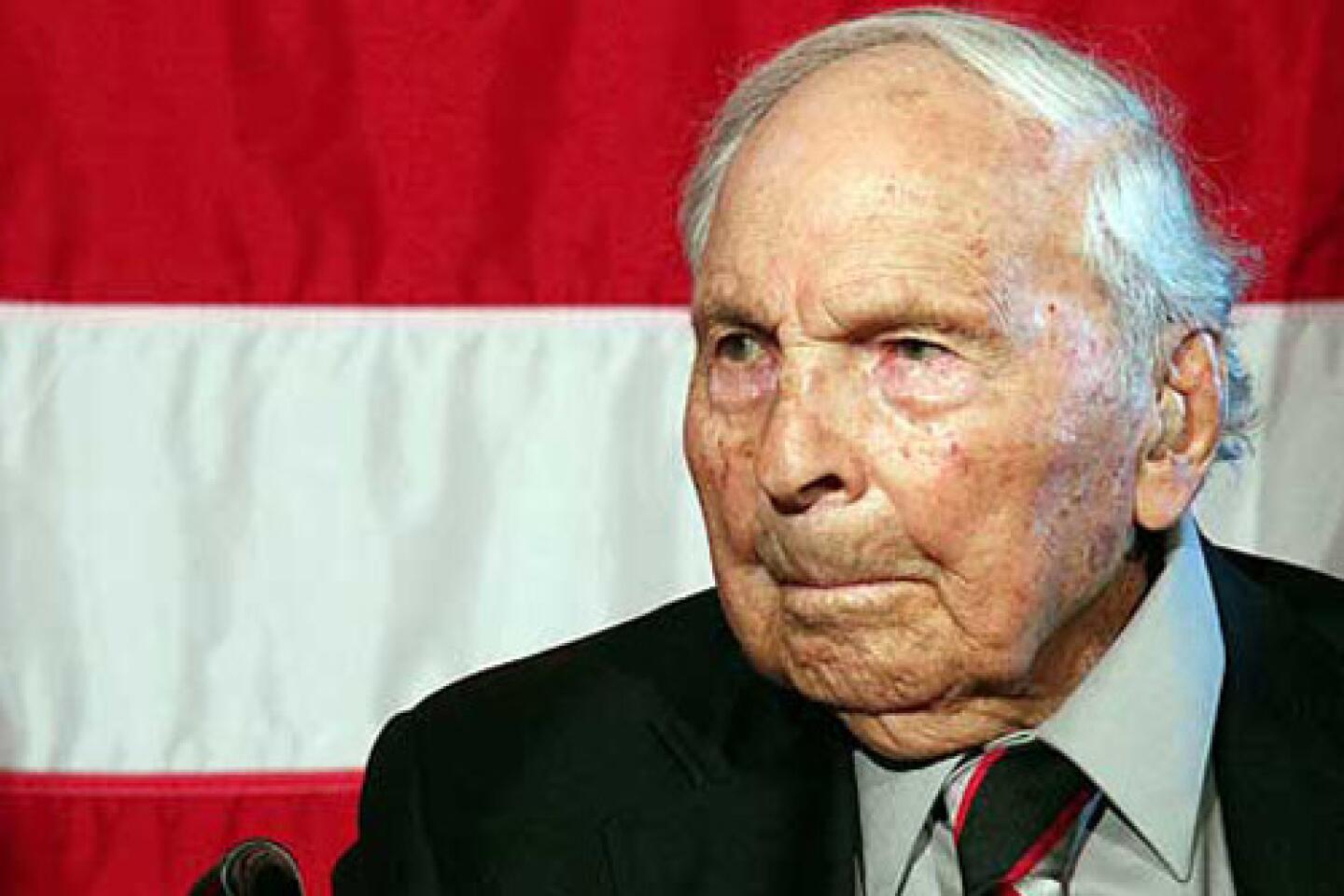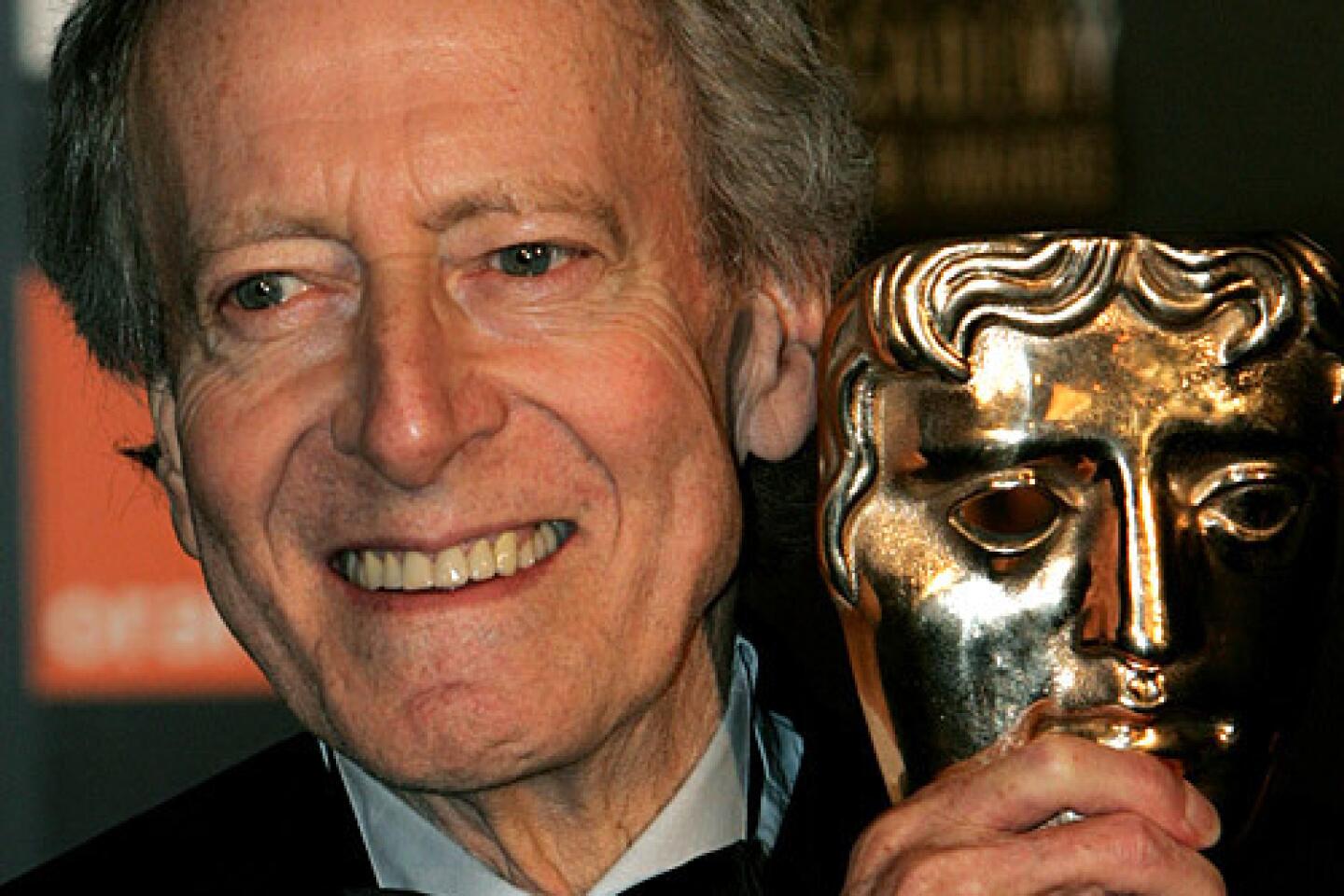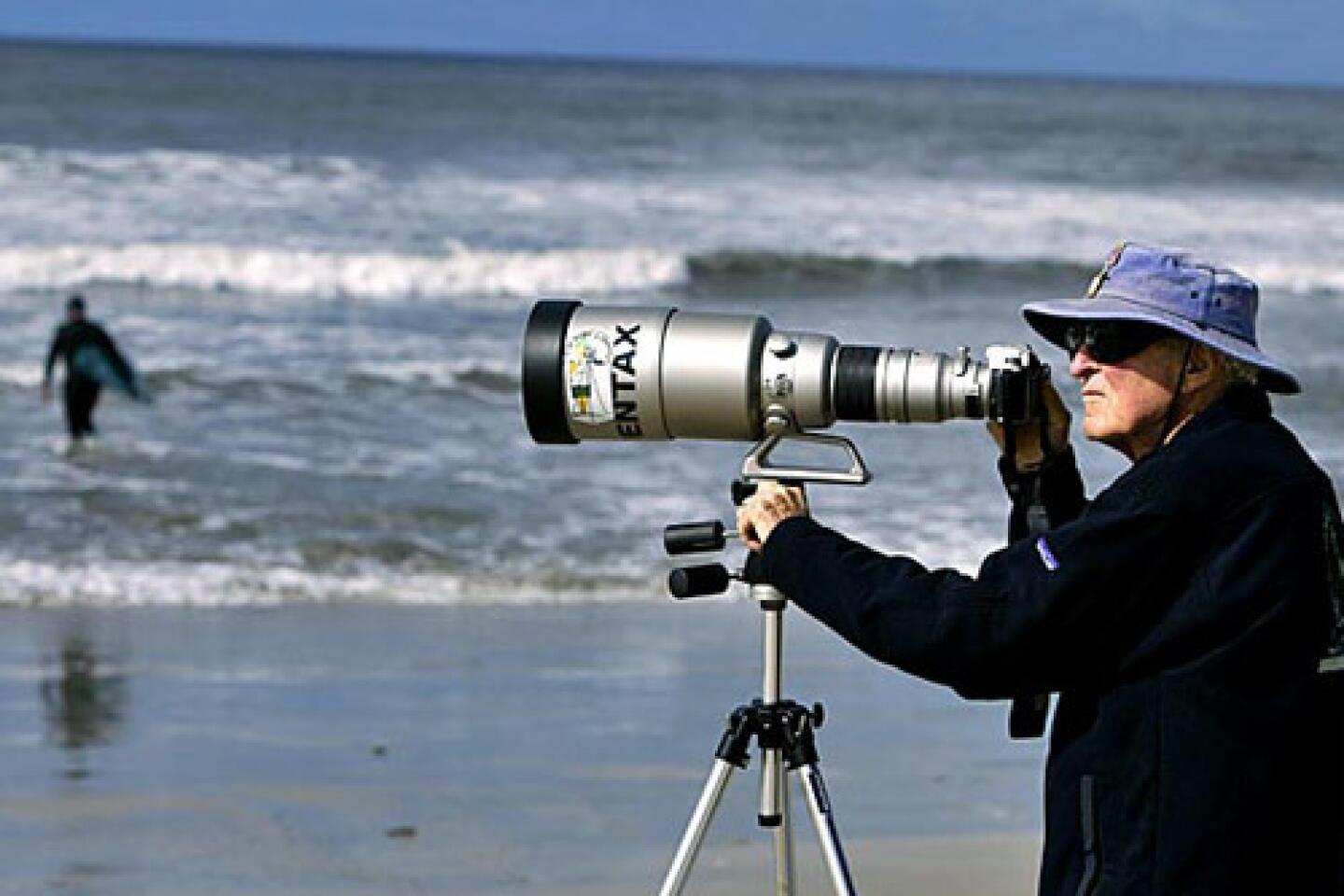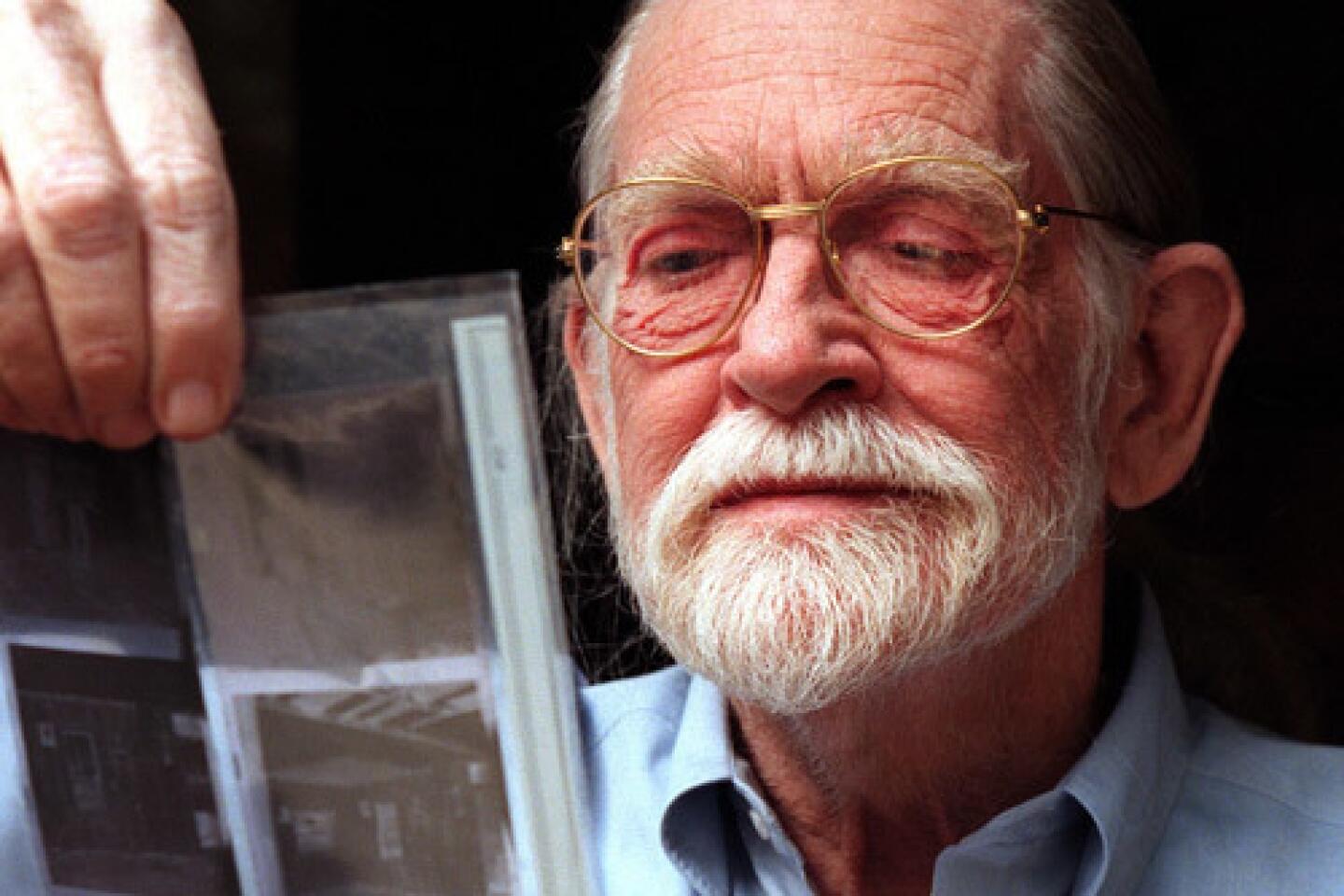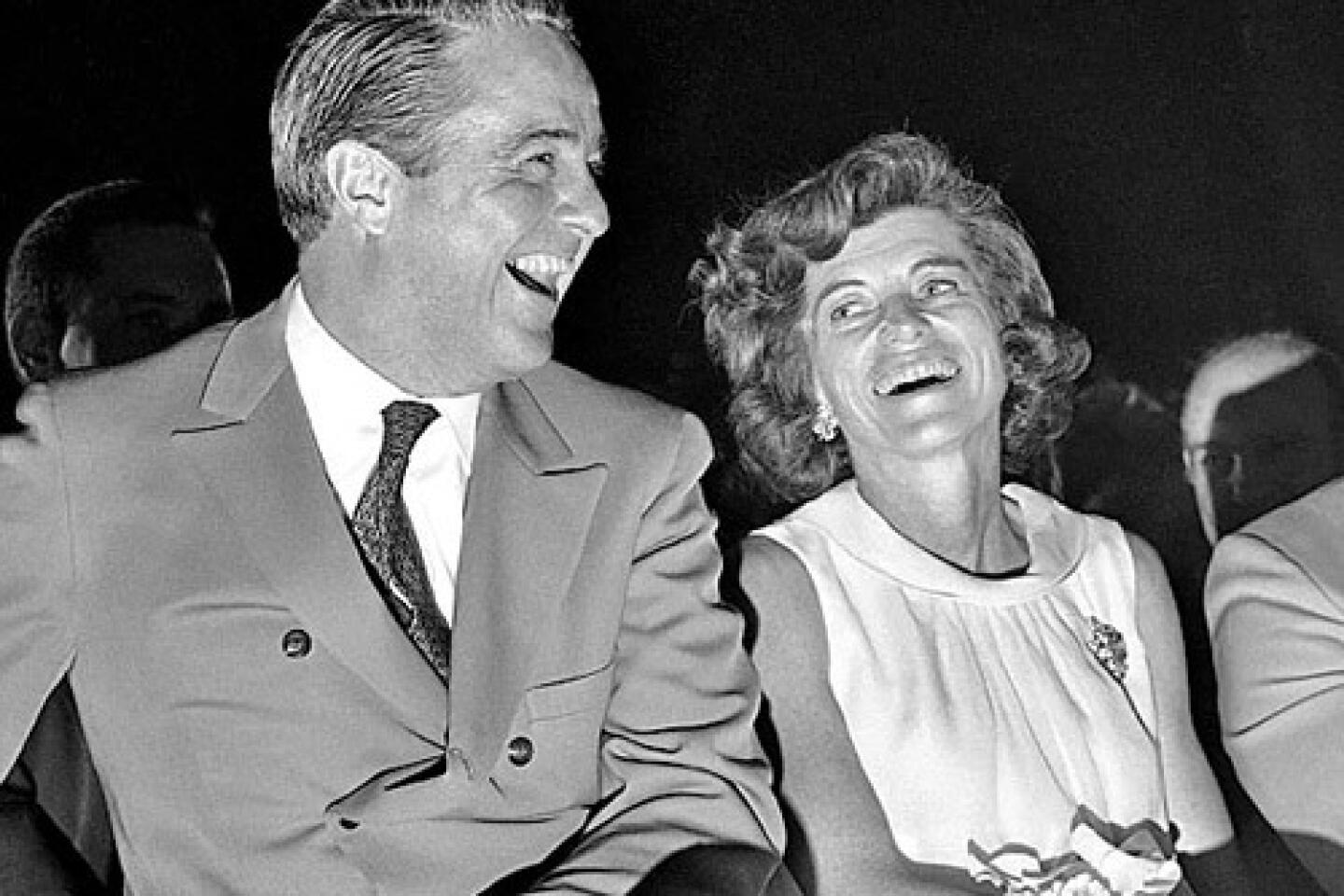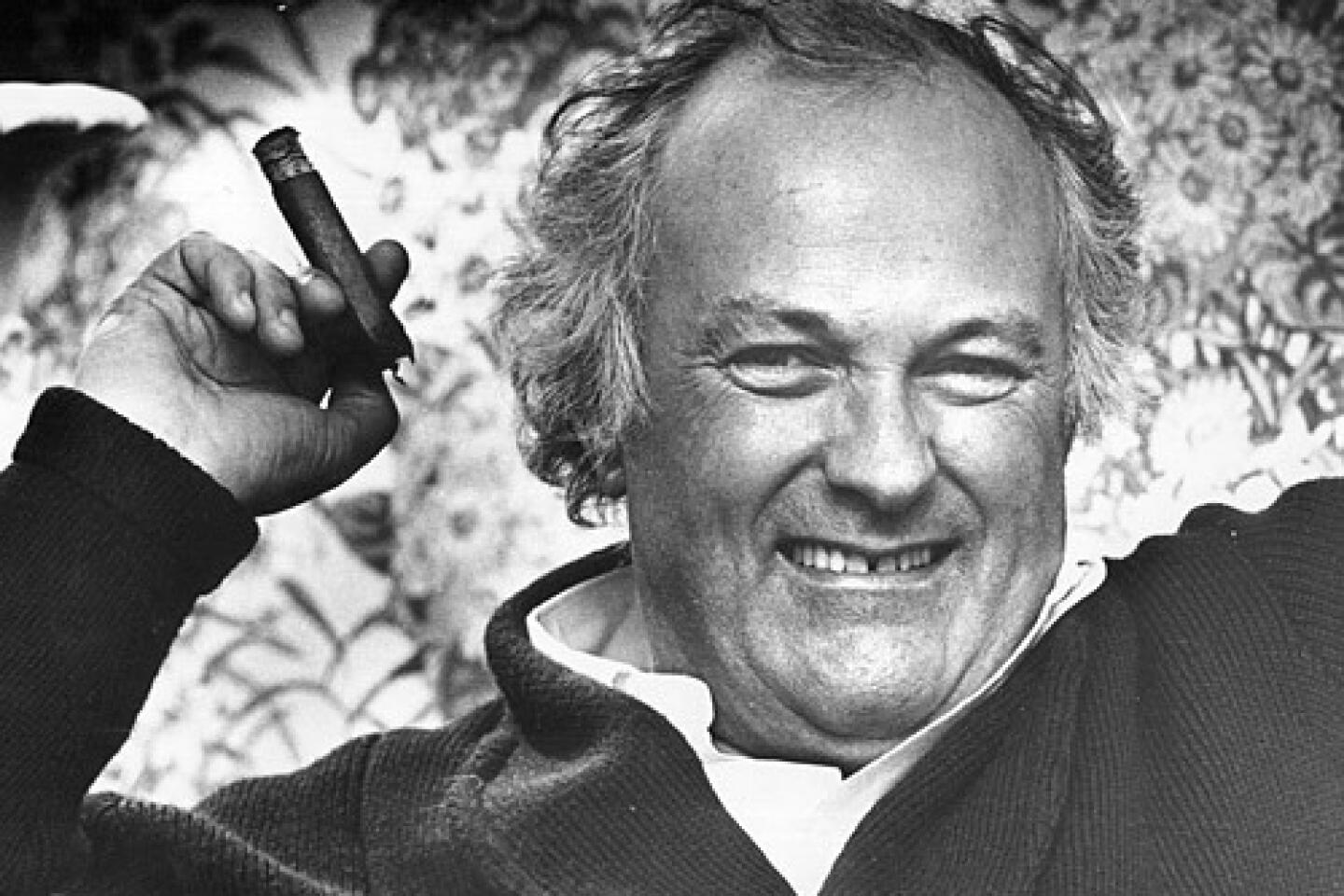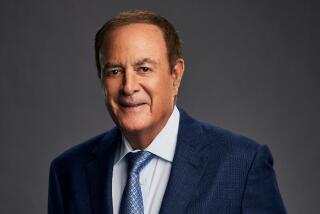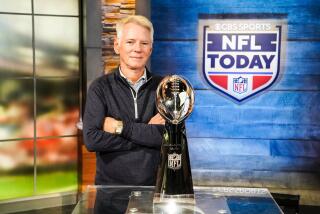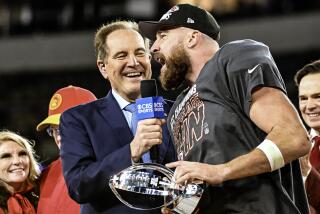Jim Rodnunsky dies at 54; developer of Cablecam system used in sporting events, Hollywood films
Filmmaker Jim Rodnunsky took a backward (and face-down) approach to developing Cablecam, among the most revolutionary innovations in the history of sports broadcasting.
Rodnunsky’s system of using a cat’s cradle of synthetic ropes to suspend a remote-controlled camera over an event began in 1989, when he constructed a Rube Goldberg-type contraption to capture footage for a ski simulator.
To get his first overhead shots, he strung 1,400 feet of steel cable above Saudan Couloir at Blackcomb Mountain in British Columbia, one of North America’s most harrowing ski runs, anchoring the cable to rocks at the top and bottom. Lying face down in an aluminum basket, the onetime world-class freestyle skier would zip down feet first, reaching speeds of 50 mph and a height of 80 feet, using motorcycle hand brakes to slow his descent — all while peering through a camera lens.
During the two decades that followed, Rodnunsky developed that prototype into an industry standard not just of sports broadcasting, but of concerts, conventions and major motion pictures.
Rodnunsky of Granada Hills died June 10 after battling brain cancer for three years. He was 54.
“He was just one of those brilliant guys who could really adapt that camera and his systems to what you needed to take your production to a place you’ve never been,” said Fred Gaudelli, producer of NBC’s “Sunday Night Football,” who ranks Cablecam — along with instant replay, hand-held cameras and the yellow first-down line — as the most significant innovations in the history of sports coverage.
In big NFL and college football games, the high-definition Cablecam — or the competing Skycam, developed by filmmaker Garrett Brown — is typically suspended about 12 feet over the players and 10 yards behind the quarterback. Using a joystick, a controller has the ability to tilt and pan the gyro-stabilized camera in all directions, snooping in on huddles, and gliding along with players, all from angles once only imaginable in video games.
“It’s a wow shot,” Fox’s Artie Kempner told The Times in 2008, before directing the broadcast of that year’s Super Bowl between the New York Giants and New England Patriots. “Cablecam gives you the wow.”
Born July 18, 1956, James Lewis Rodnunsky grew up in Edmonton, Canada, before his family moved to the San Fernando Valley when he was in his teens. He received a bachelor’s degree in political science and economics from UCLA before studying filmmaking and acting. More recently, he attended the Academy for Jewish Religion of Los Angeles where he pursued rabbinic studies.
Two years after Rodnunsky’s initial experiment on the ski slope, Hollywood came calling. Director Steven Spielberg used the Cablecam to make “Hook,” and the system was later used in movies such as “Happy Gilmore,” “Miracle,” “True Lies,” “Van Helsing,” “Charlie and the Chocolate Factory” and “Dreamgirls.”
Rodnunsky, who founded Chatsworth-based Cablecam International, got his first big sports break in 1994 when his company was hired to work the Winter Olympics in Lillehammer, Norway.
That version required two people to ride it — one driving and the other shooting footage. At the end of the day, local residents gathered at the top of the skiing course to take Cablecam rides at speeds of 60 to 70 mph.
“That was an E-ticket ride, let me tell you,” Rodnunsky told The Times in a 2008 interview. “They were always disappointed at the end of the day when we had to pack up and go. We were disappointed too.”
Rodnunsky would go on to receive three technical awards from the Academy of Motion Picture Arts and Sciences. He also won multiple Emmys.
ESPN’s Chip Dean, director of “Monday Night Football,” first worked with Rodnunsky on the inaugural Summer X Games in 1995, then at the 1998 Rose Bowl between Michigan and Washington State, when the camera was used to follow Heisman Trophy winner Charles Woodson all over the field.
“The Rose Bowl was a great challenge because it had never been done before and that was such hallowed ground,” Dean said. “Jim helped us sell it to the Rose Bowl Committee and everyone involved.
“Besides being the inventor, he was a salesman and a VP all at the same time. He was a one-stop shop. He tried to do it all and was very successful not only in the engineering of it, but in the integration of it into the telecast.”
Aaron Fitzgerald was Cablecam operator under Rodnunsky for 10 years, working three NFL seasons, including a Super Bowl; the World Series, PGA Tour and NBA games; MTV Video Music Awards; three Academy Award shows; and the 2004 presidential elections.
More than those events, it was Rodnunsky’s gregarious personality that Fitzgerald will best remember.
“I’ve never encountered anybody who was so well thought of by the people in this industry,” Fitzgerald said. “Everybody loved him like a big brother. I only ever saw him in a great mood, whether we were out at night or loading cases on a truck at 4 in the morning. He was always happy and always the funniest guy in the room.
“It made us want to do a better job for him.”
Rodnunsky is survived by his wife, Lisa; his children, Tatiana, Daniel and Alexandra; and his brothers, Serge and Pierre.
sam.farmer@latimes.com
twitter.com/LATimesfarmer
More to Read
Start your day right
Sign up for Essential California for the L.A. Times biggest news, features and recommendations in your inbox six days a week.
You may occasionally receive promotional content from the Los Angeles Times.
